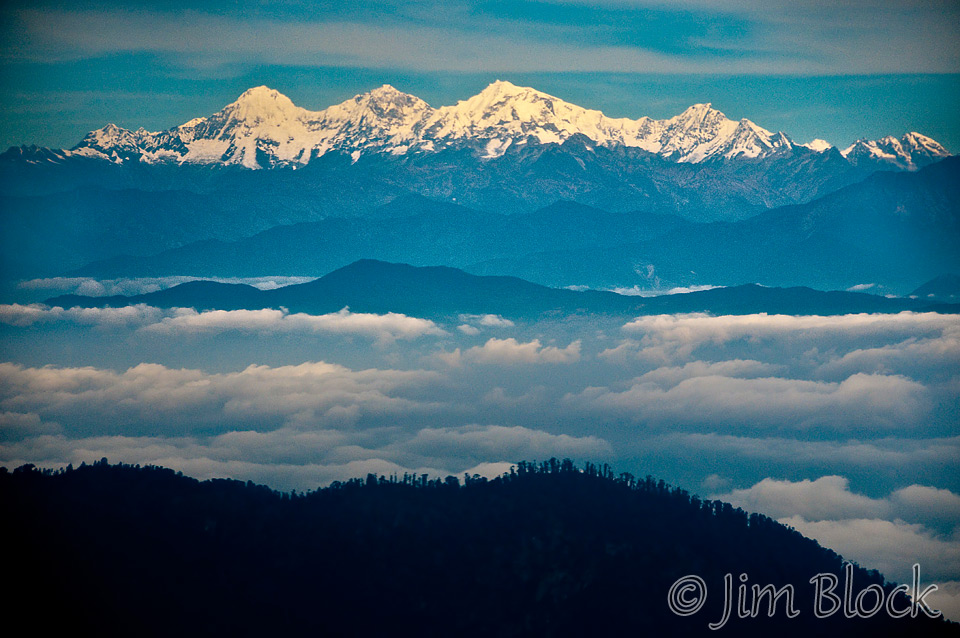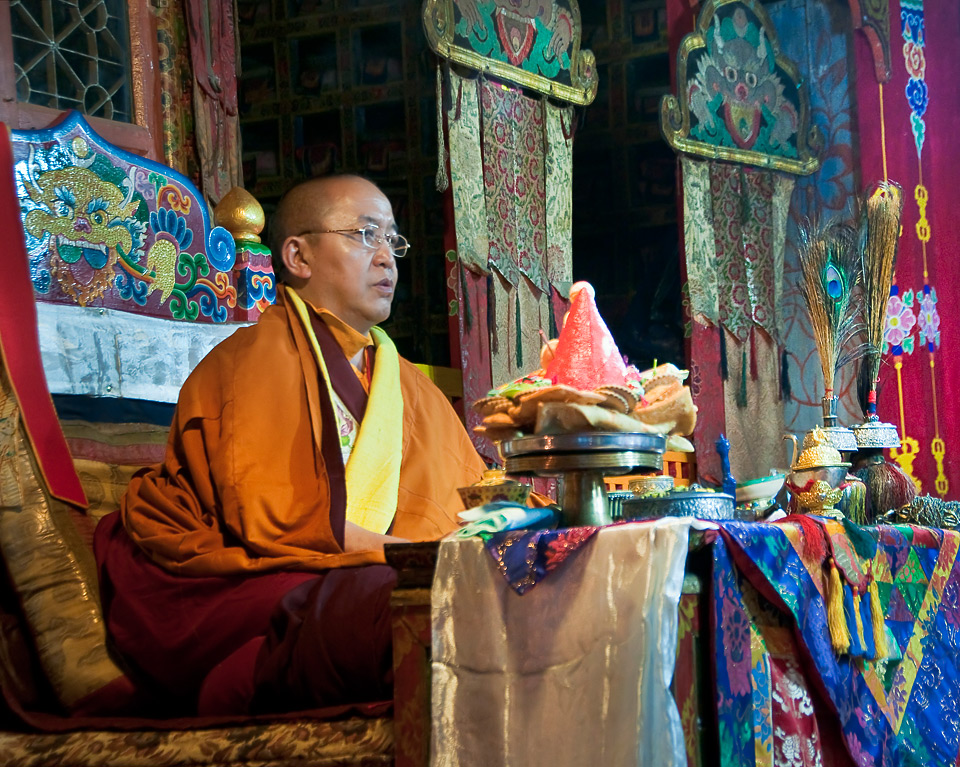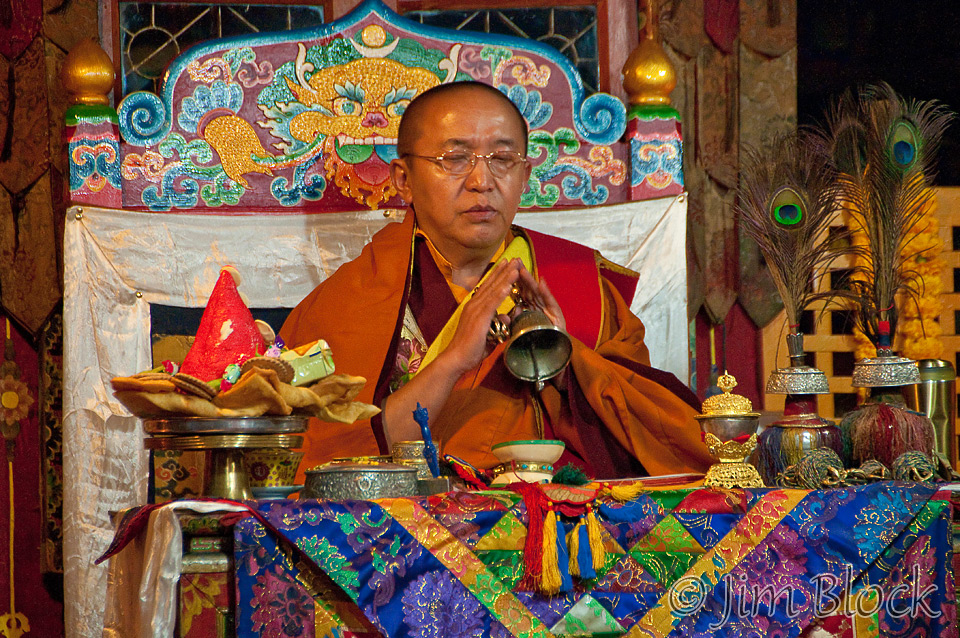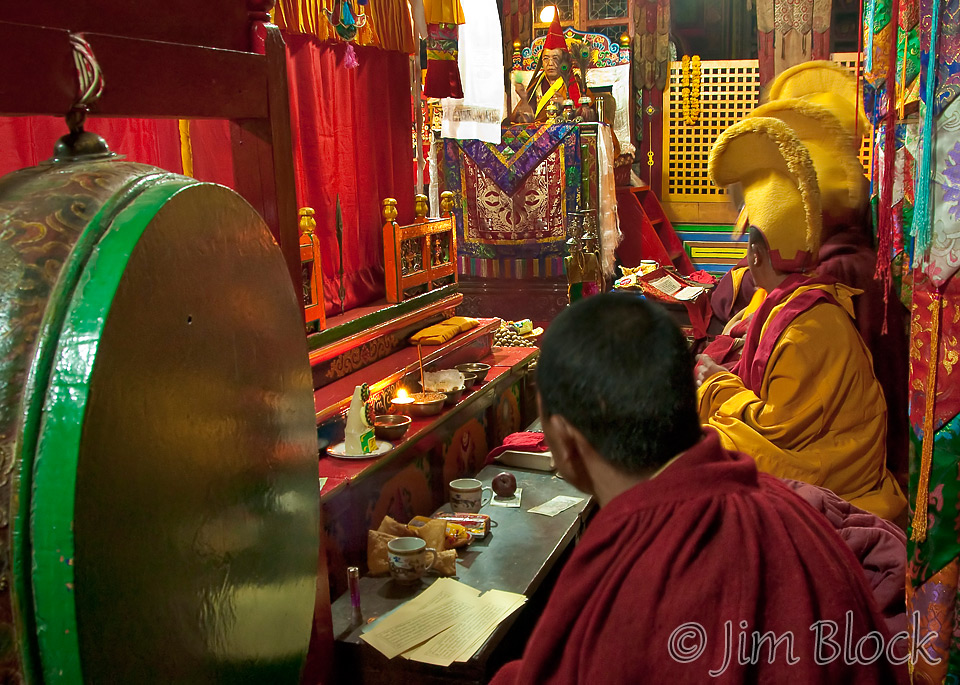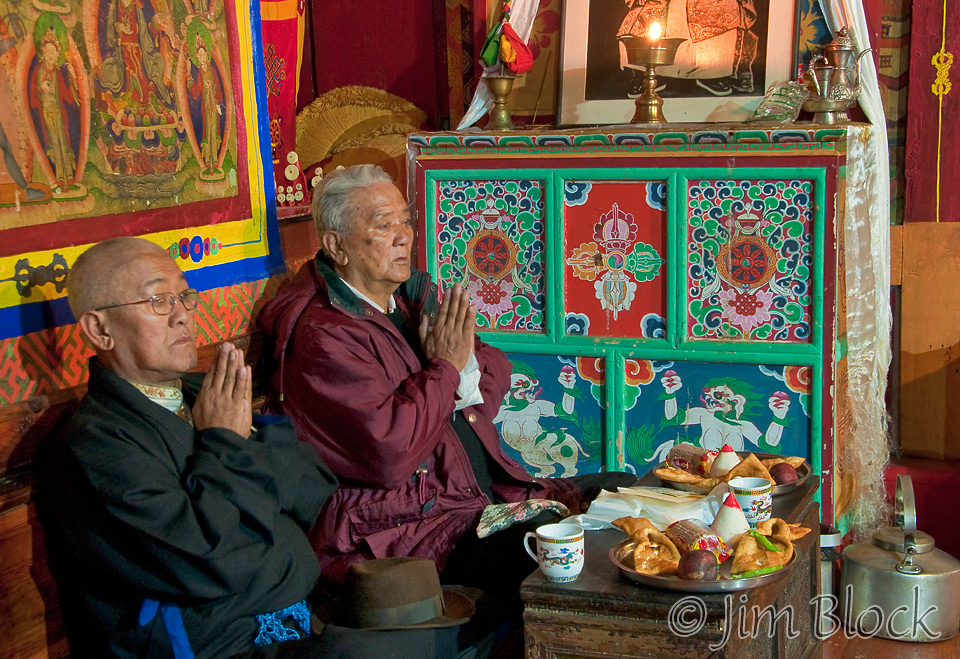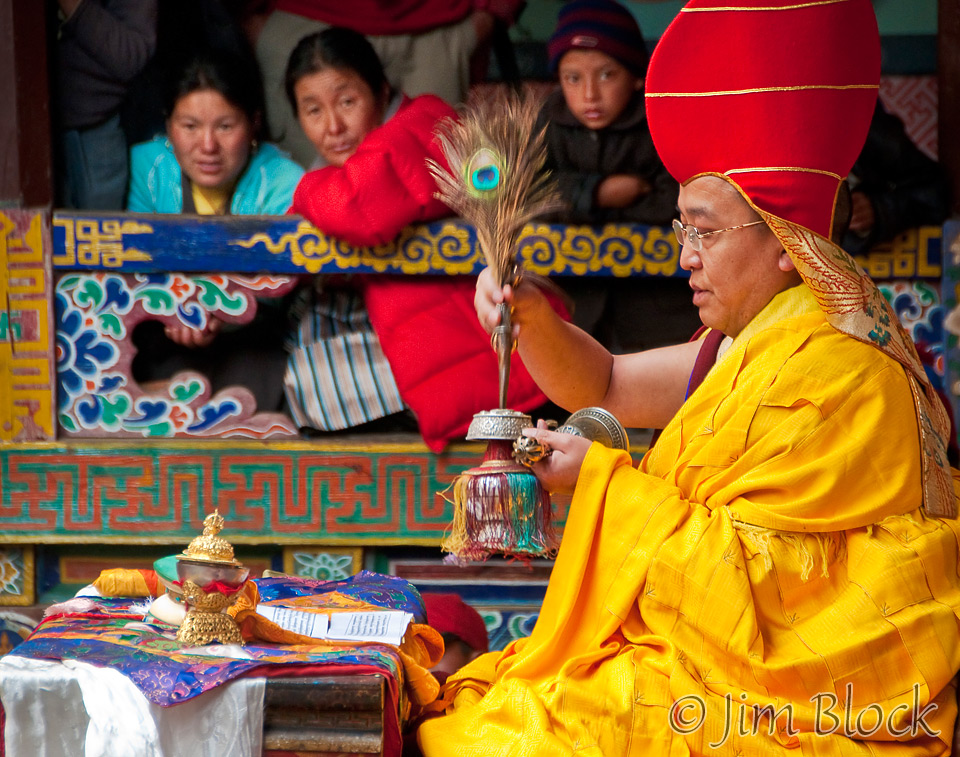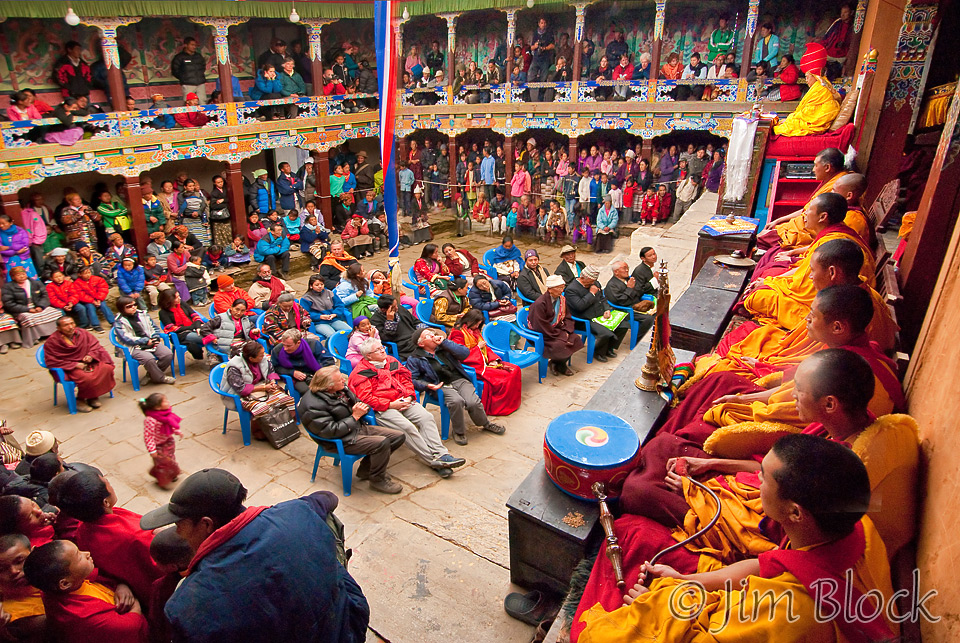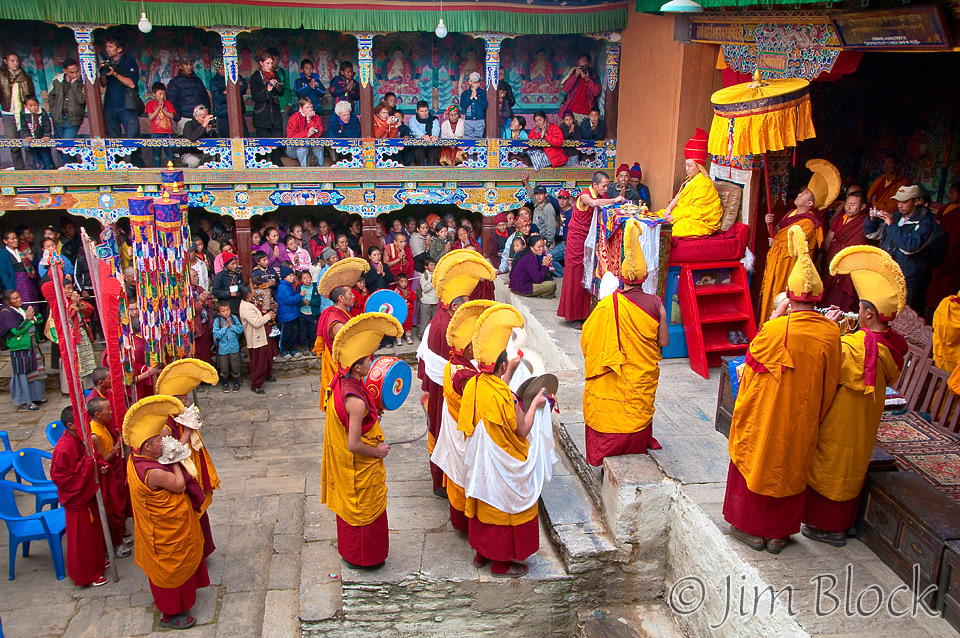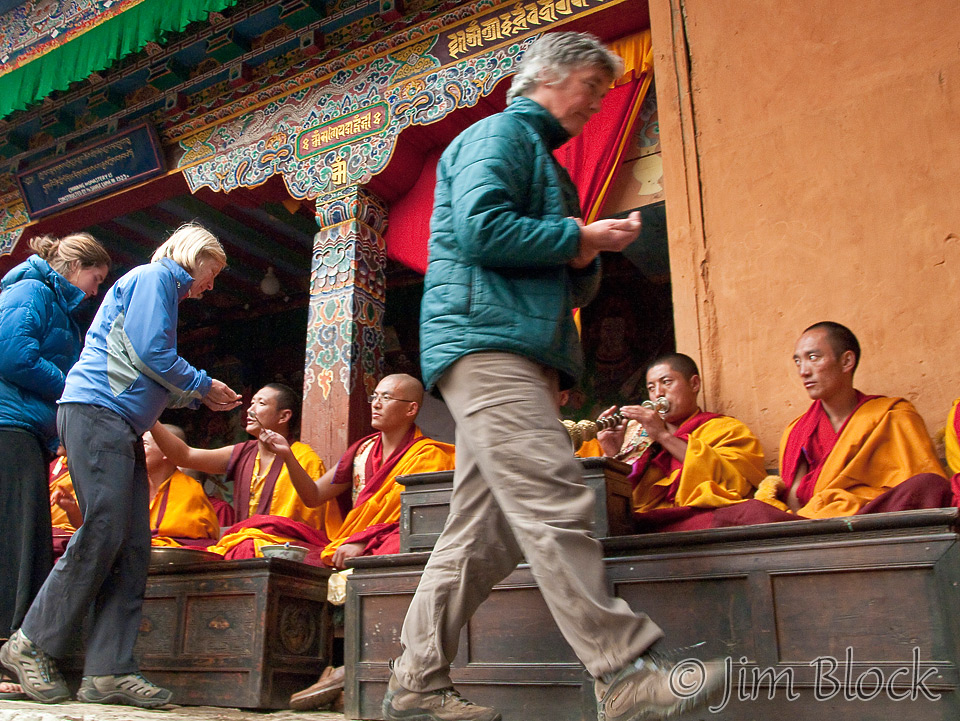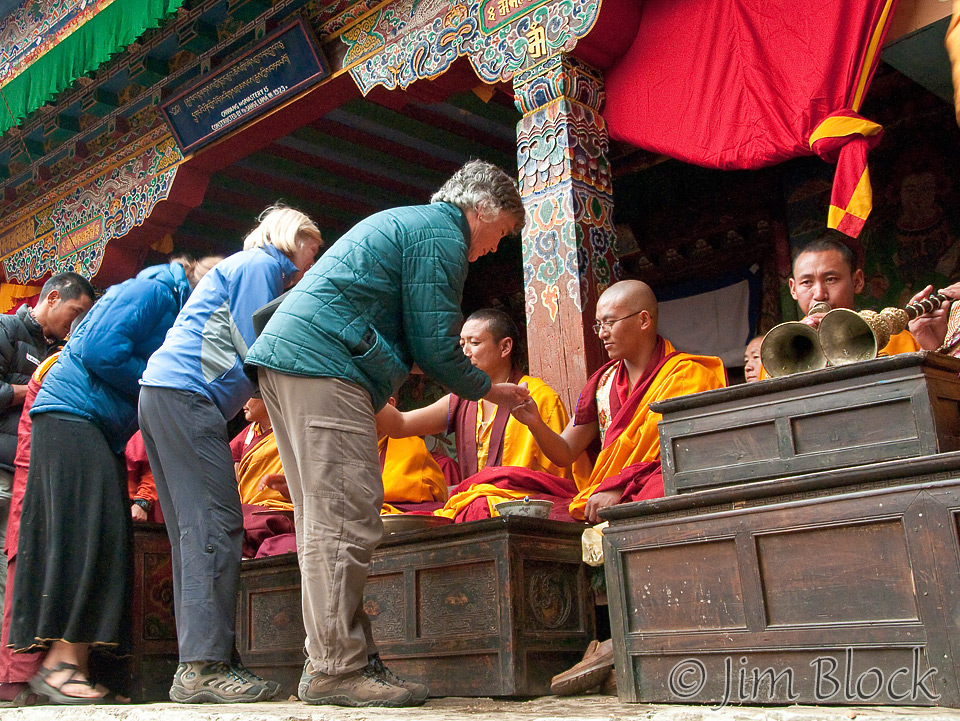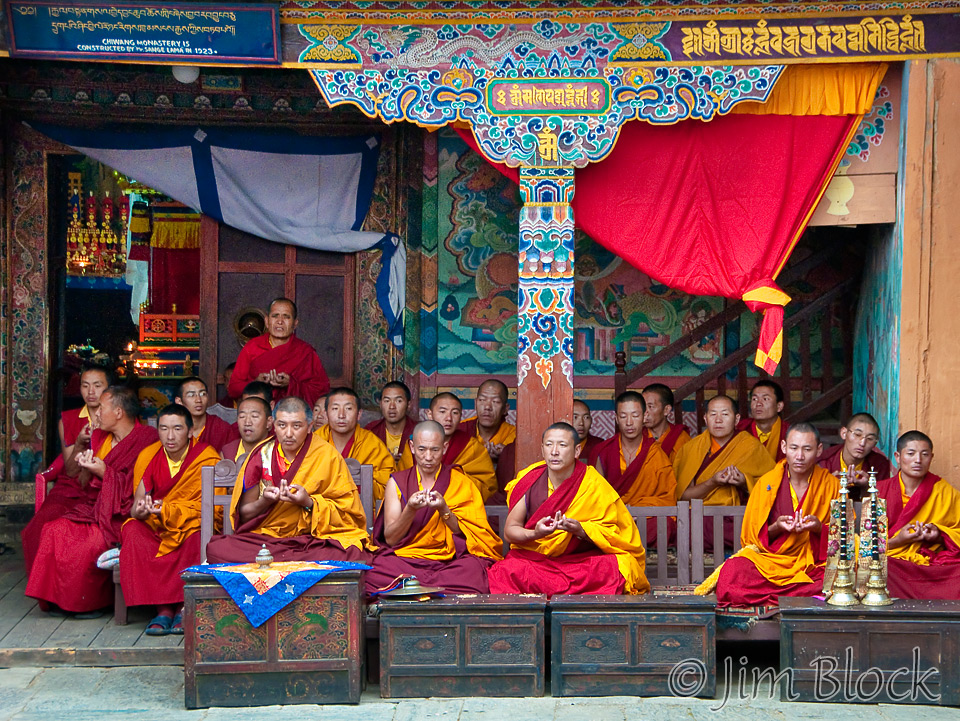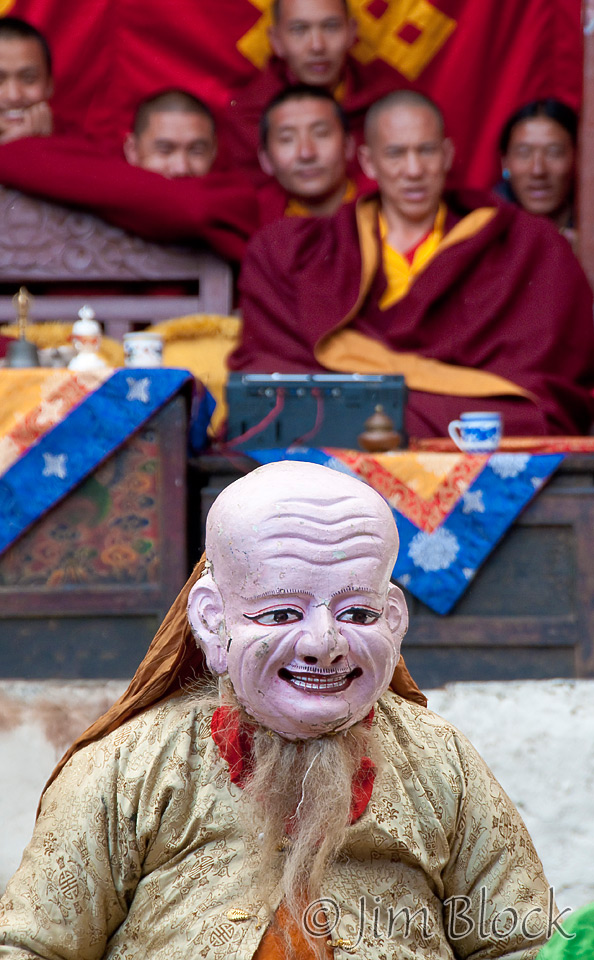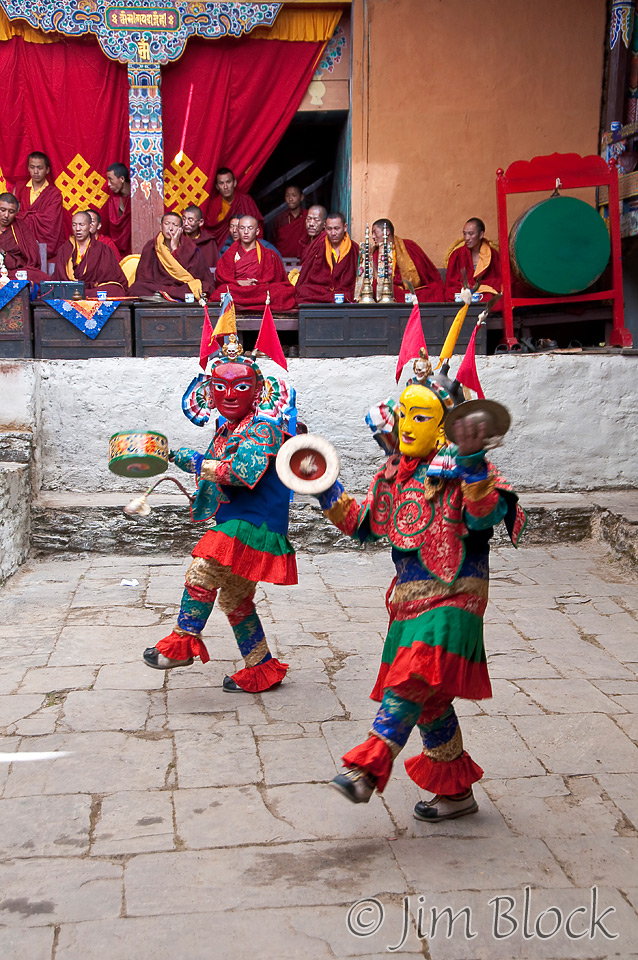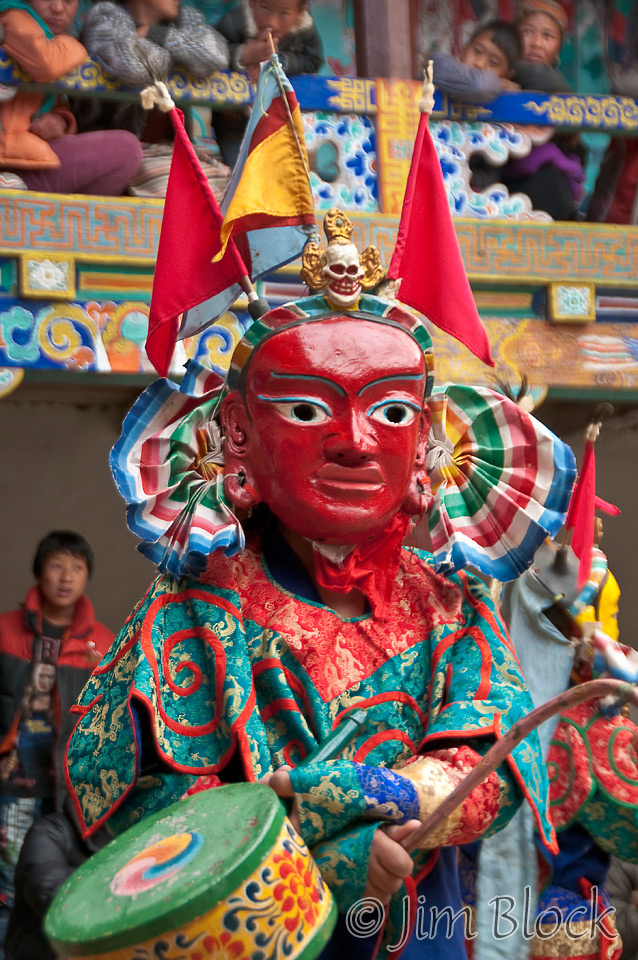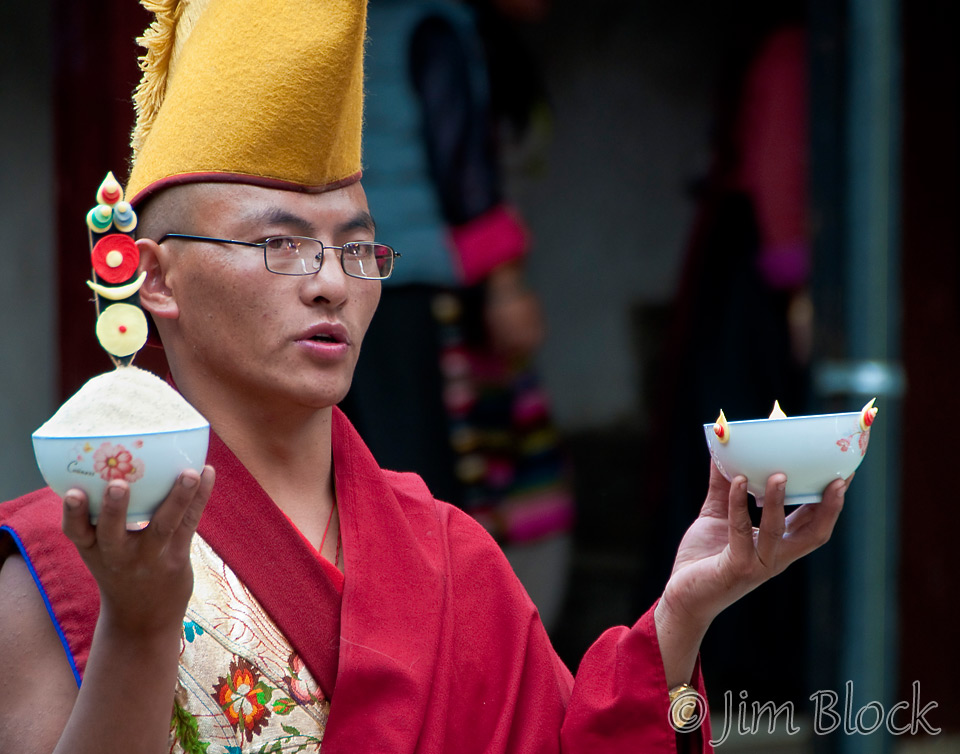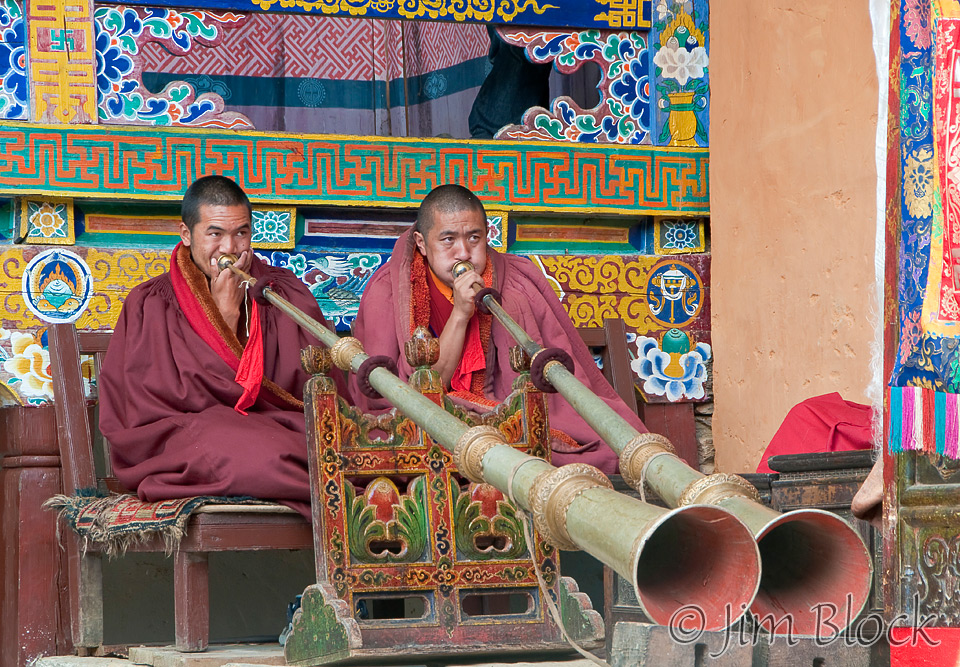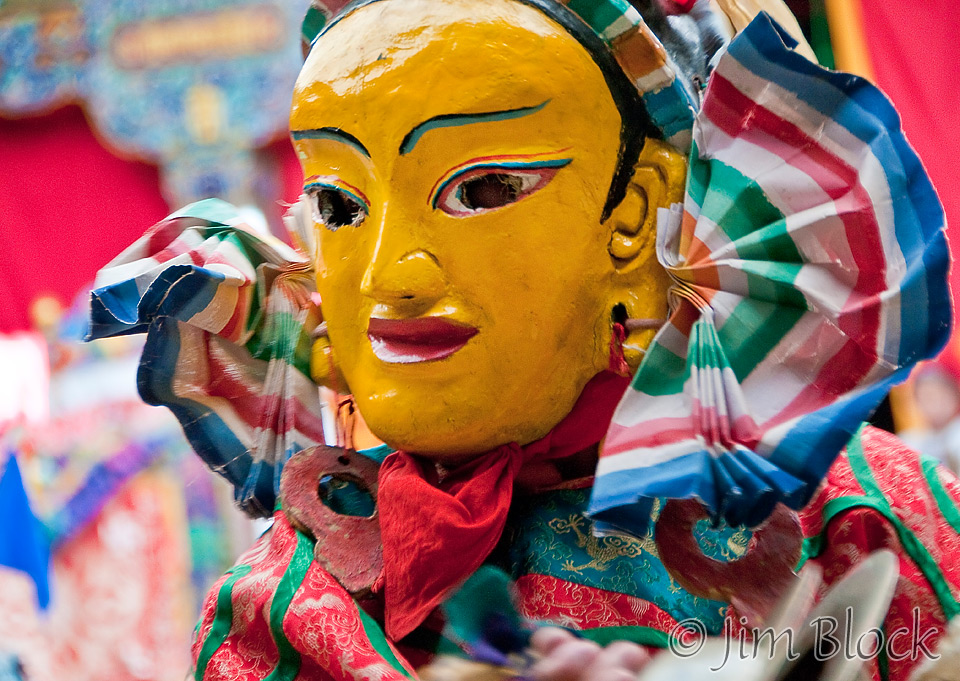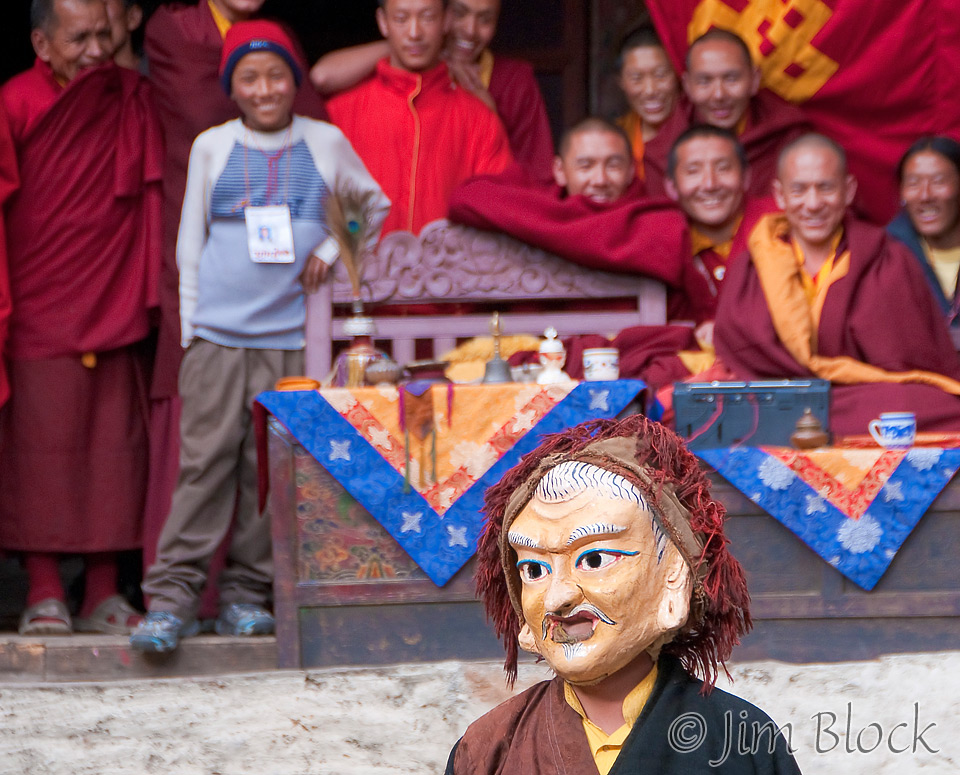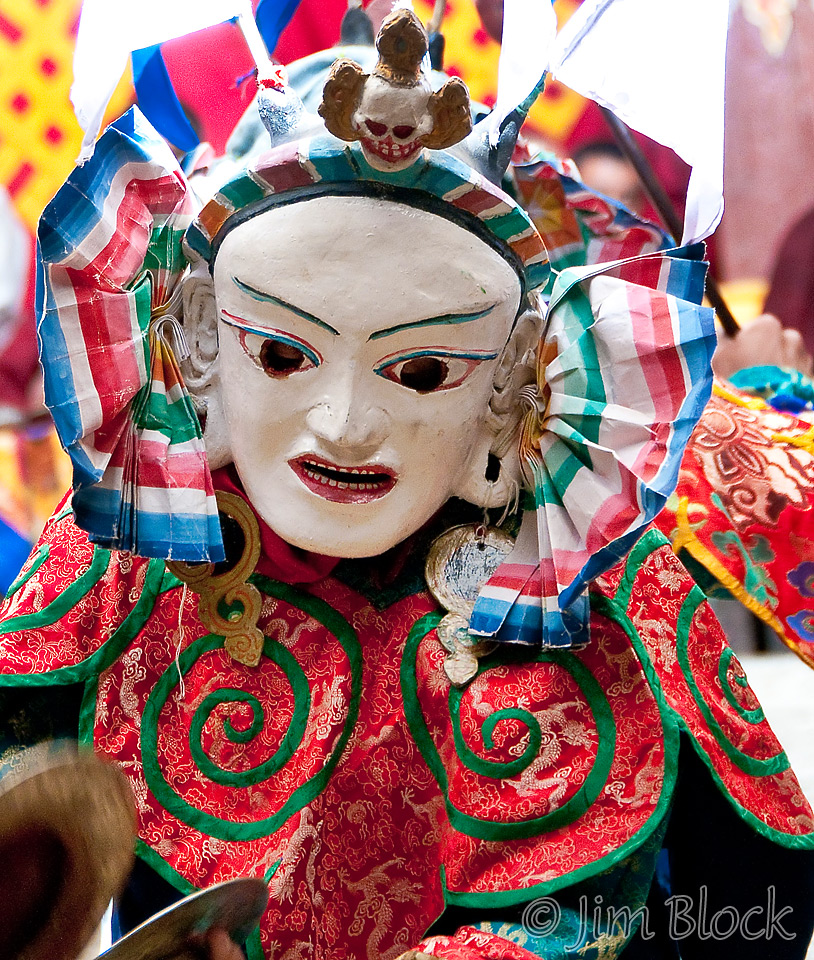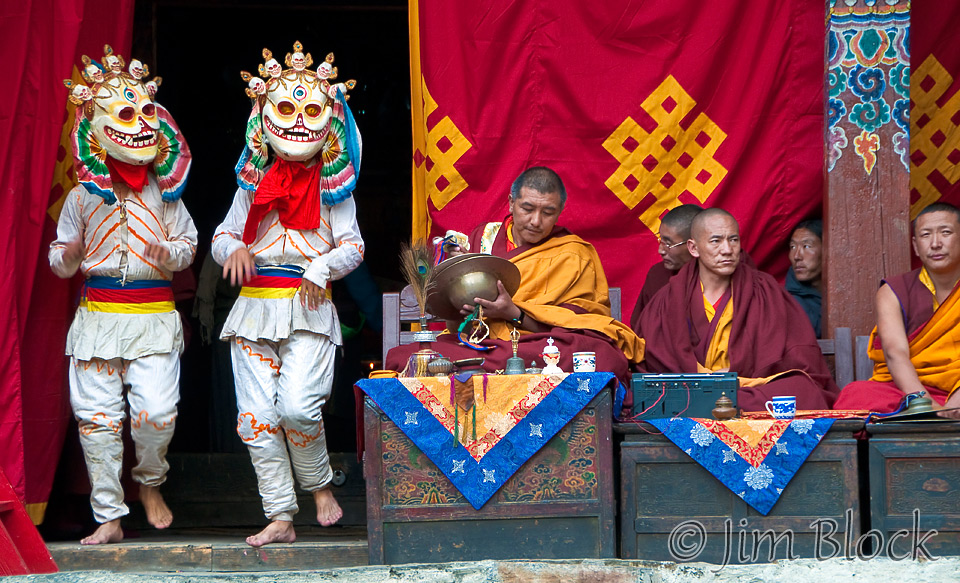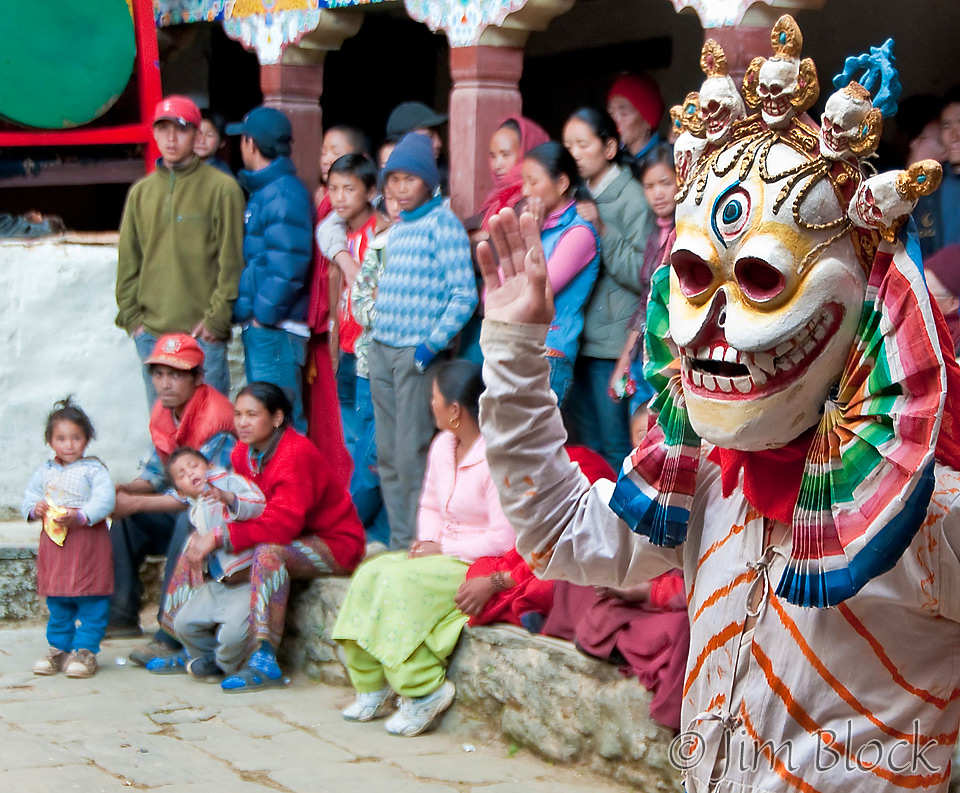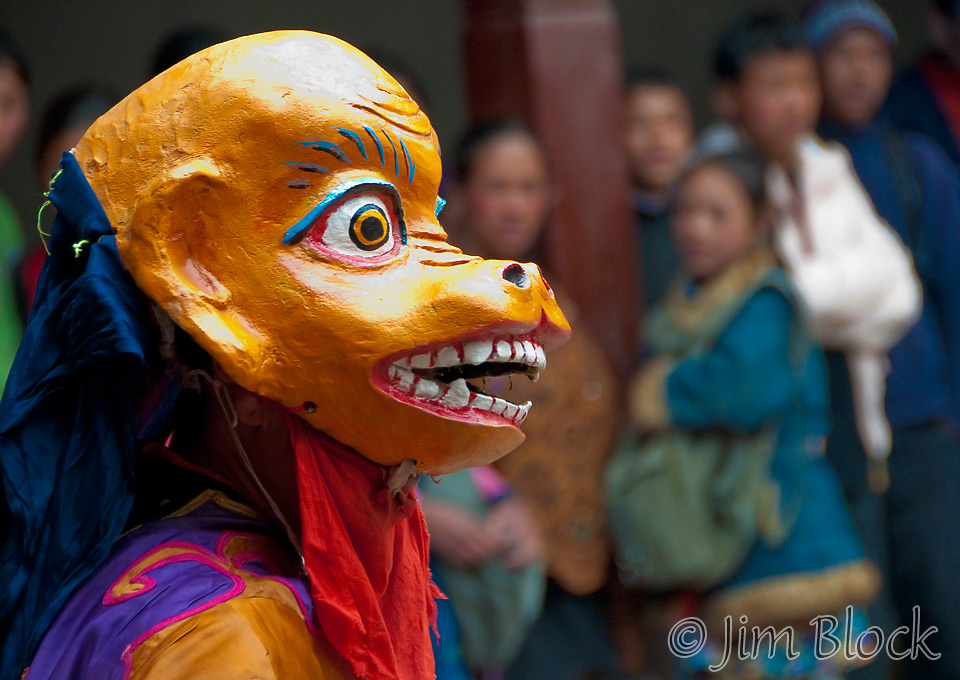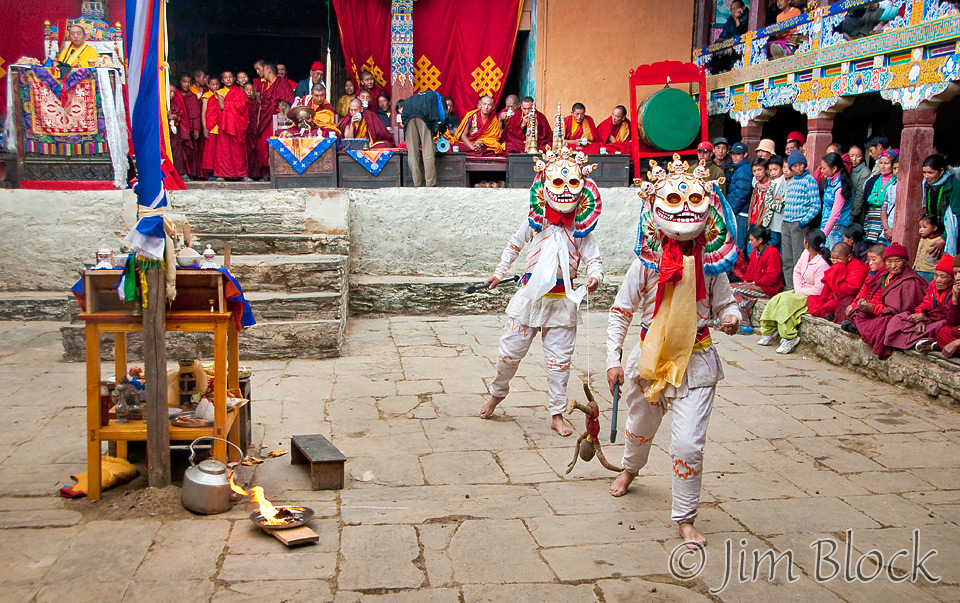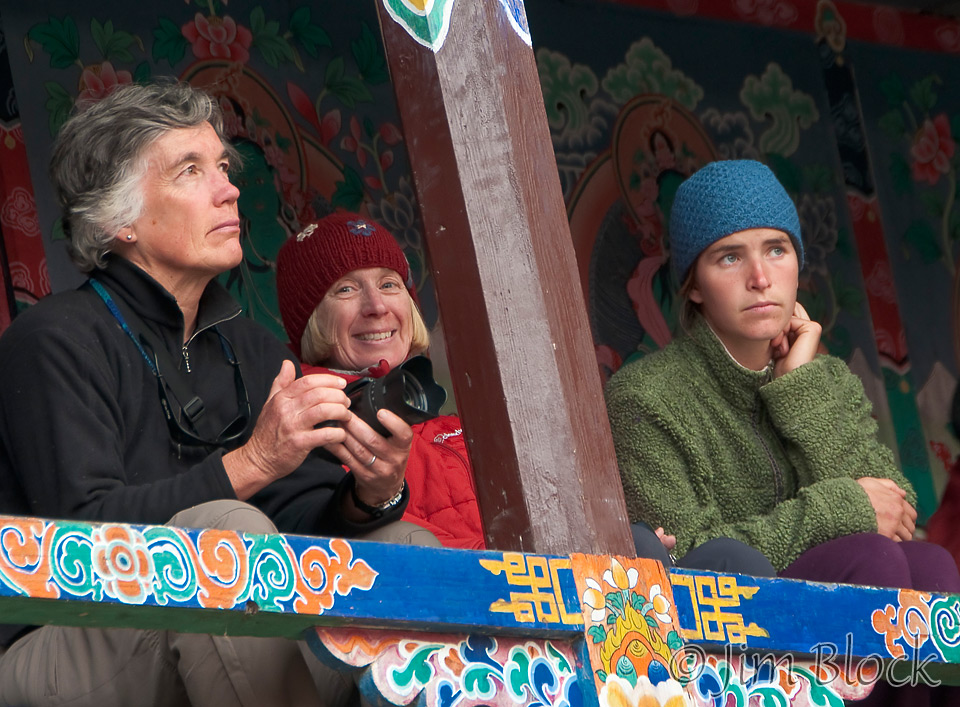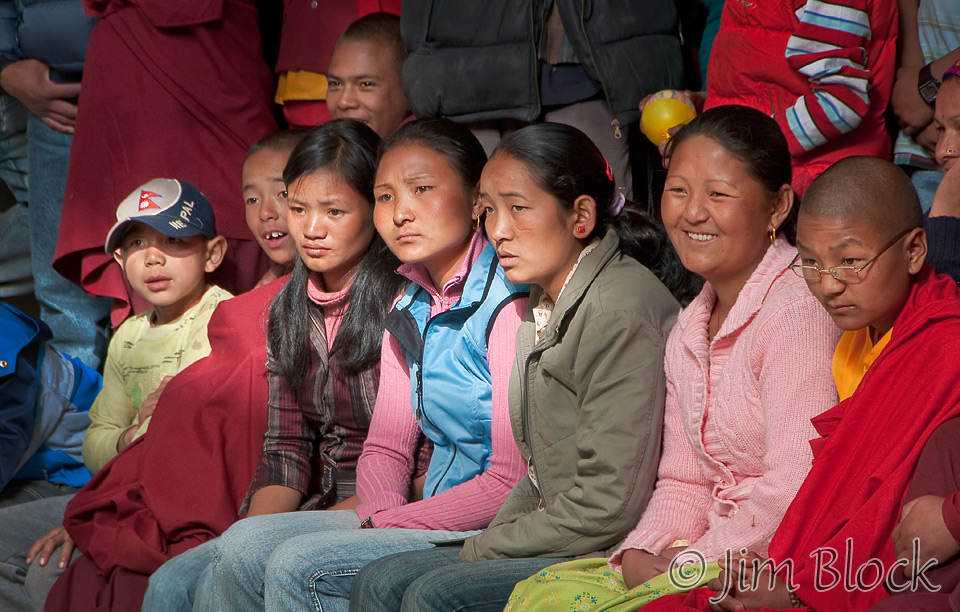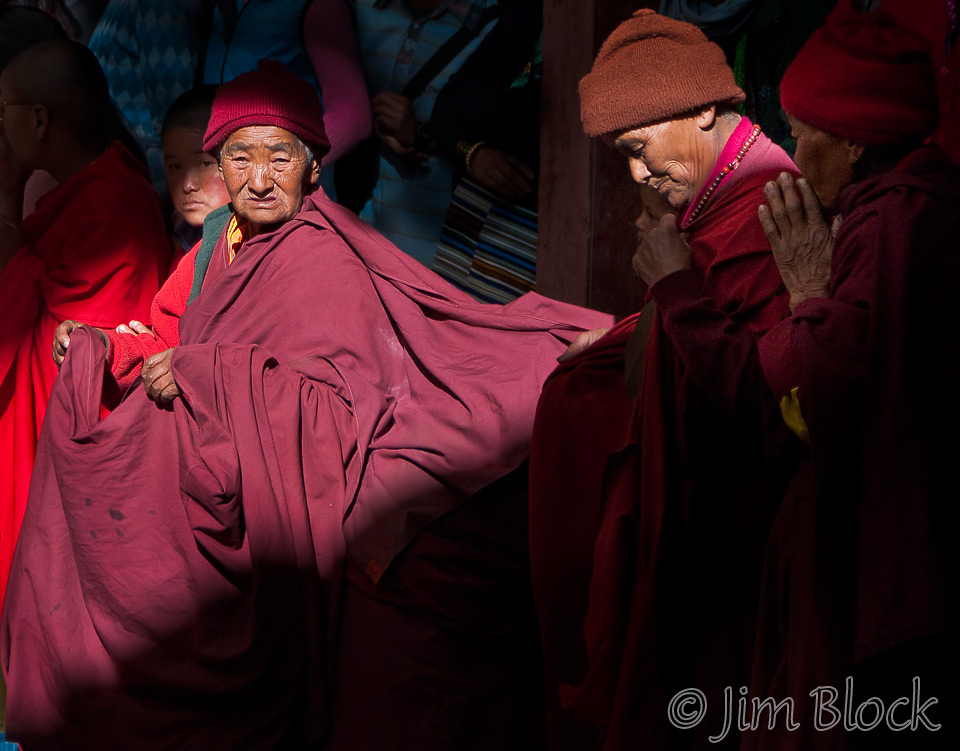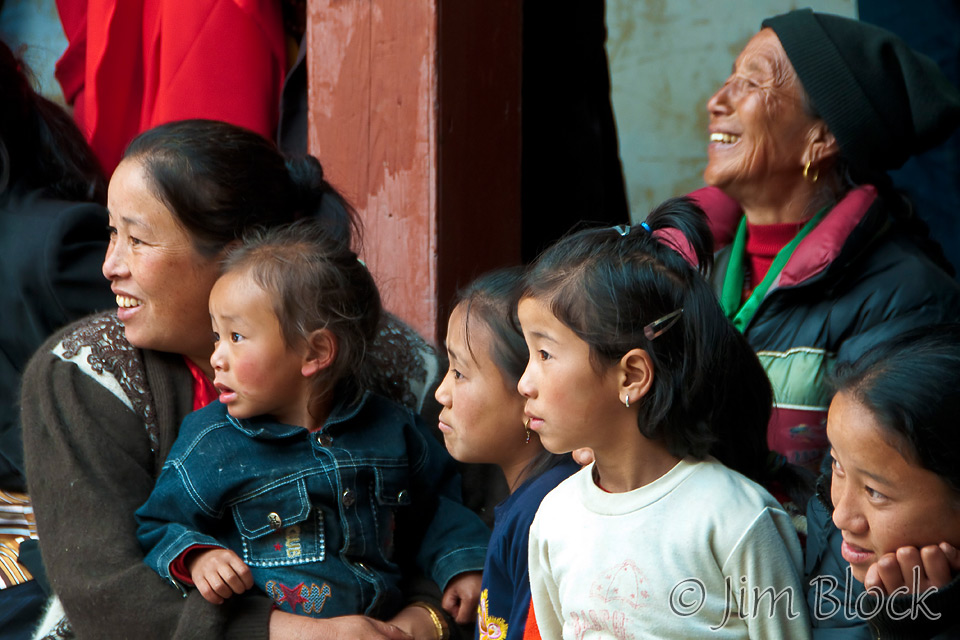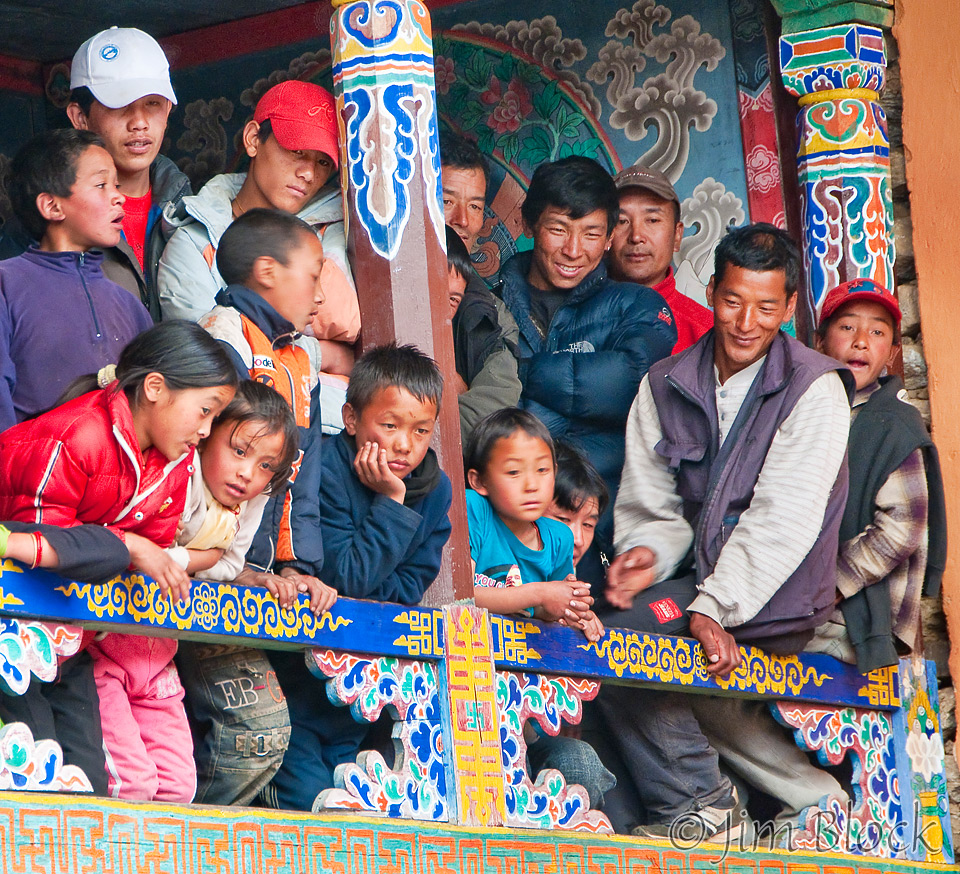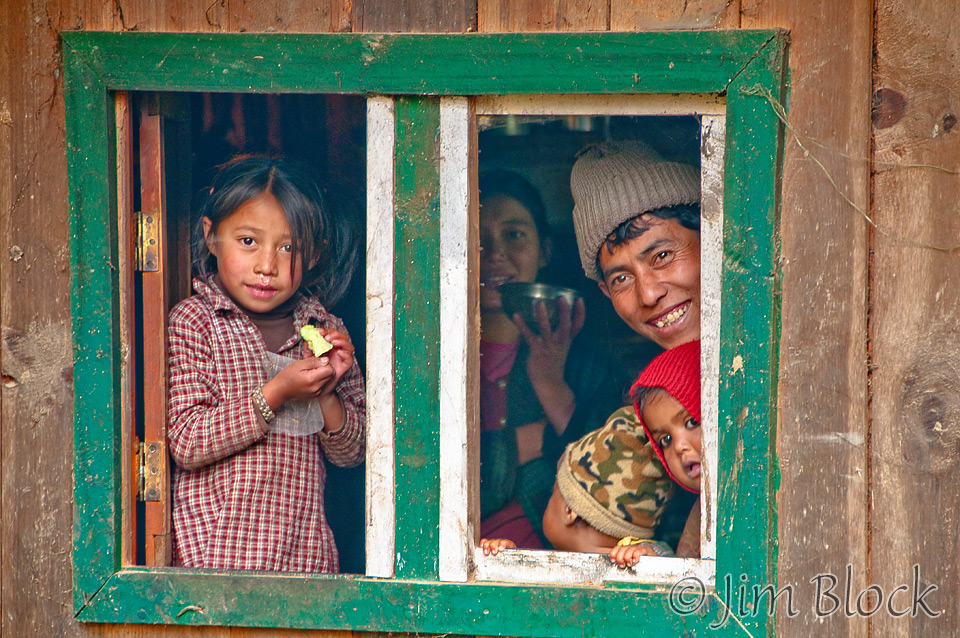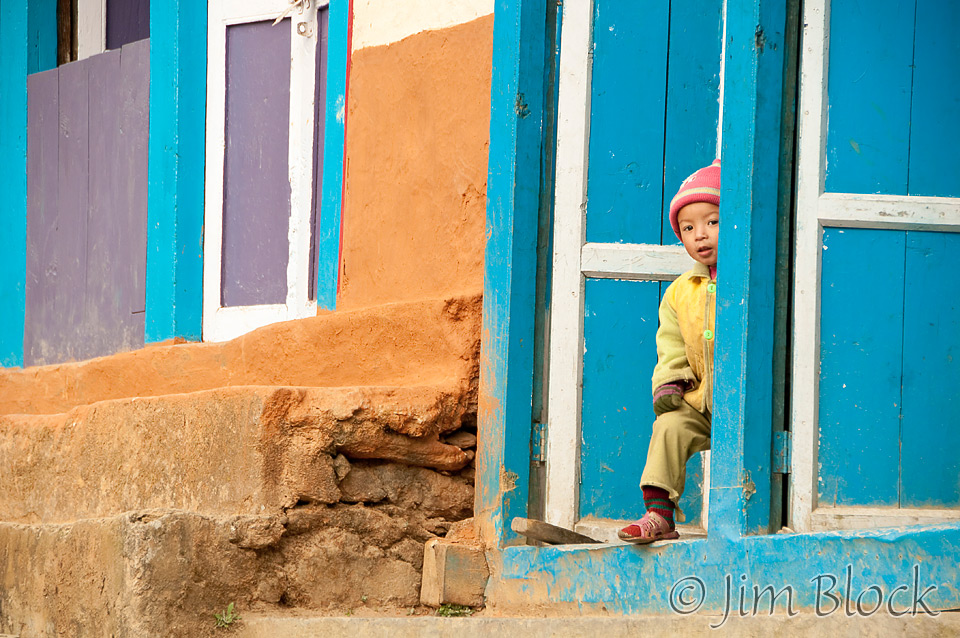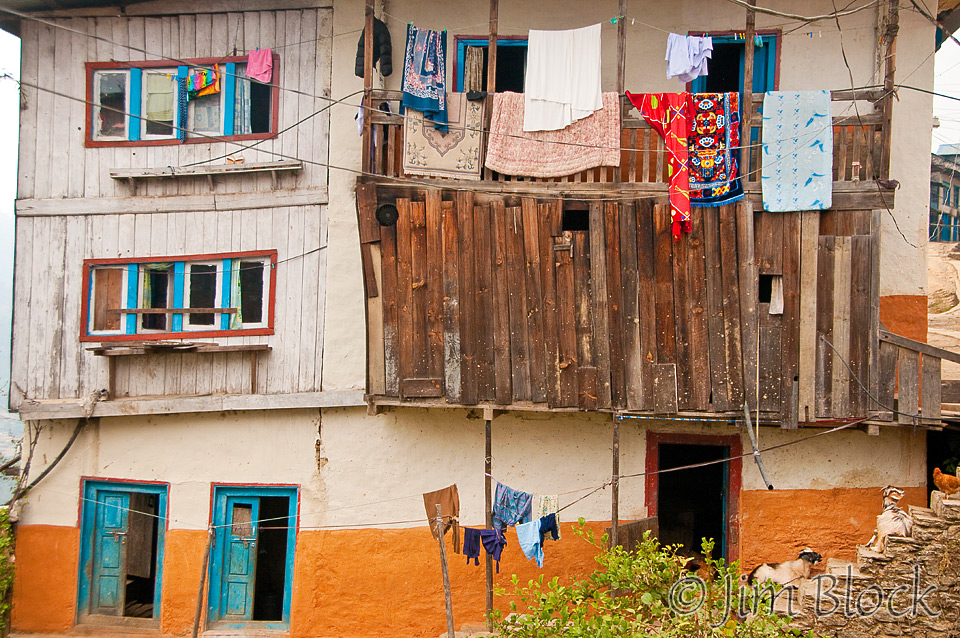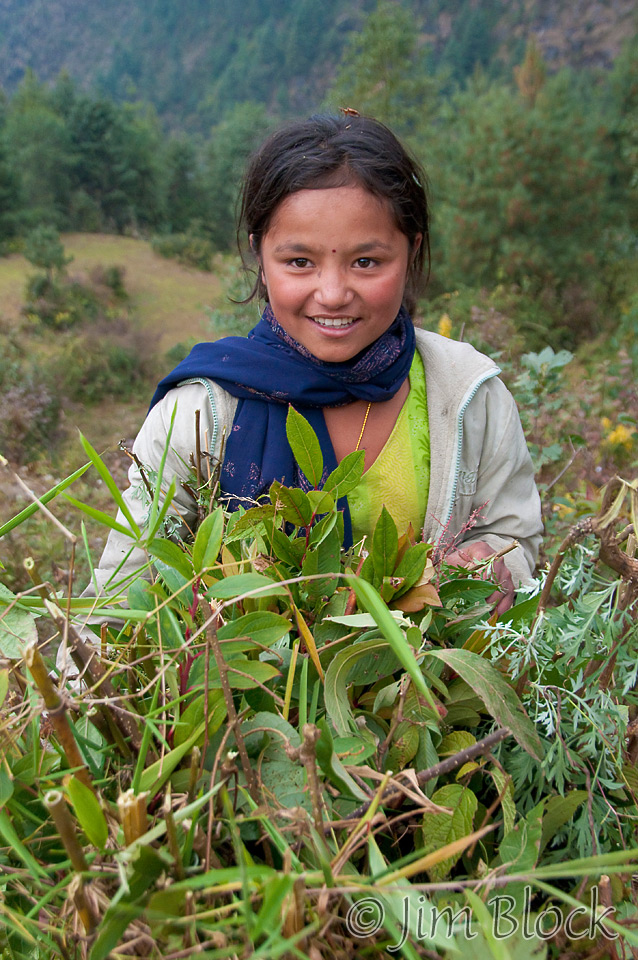Mani Rimdu
Near the culmination of my first trip to Nepal in 2008, I developed a bad cold. We were trekking for many hours that day before a long climb to the Chiwang Gompa monastery. Seeing the shape I was in, Chhongba gave my pack to one of the sherpas to carry. Then, as the ultimate blow to my dignity, he took the camera from my neck and carried it himself so I was not burdened by this extra two or three pounds. I really suffered that day.
Mani Rimdu is a sacred ceremonies and series of events of empowerment. It is a sequence of nineteen days celebration, which concludes with three days public festival which we attended.
Struggling up the long hill, we passed many crowded camping areas until we got to a wonderful private, enclosed campsite that was all our own a few hundred yards below the monastery. On the left below you can see our porters and sherpas digging a hole that will have flat stones on each side and a tent over it. This was located below our enclosed area and was our toilet.
On the right below you can see our enclosed area with our individual orange tents and the blue dining room tent. We would spend three nights there. Below our area some folks set up a market place. This photo was taken just after 6 AM our third morning at Chiwang Gompa.
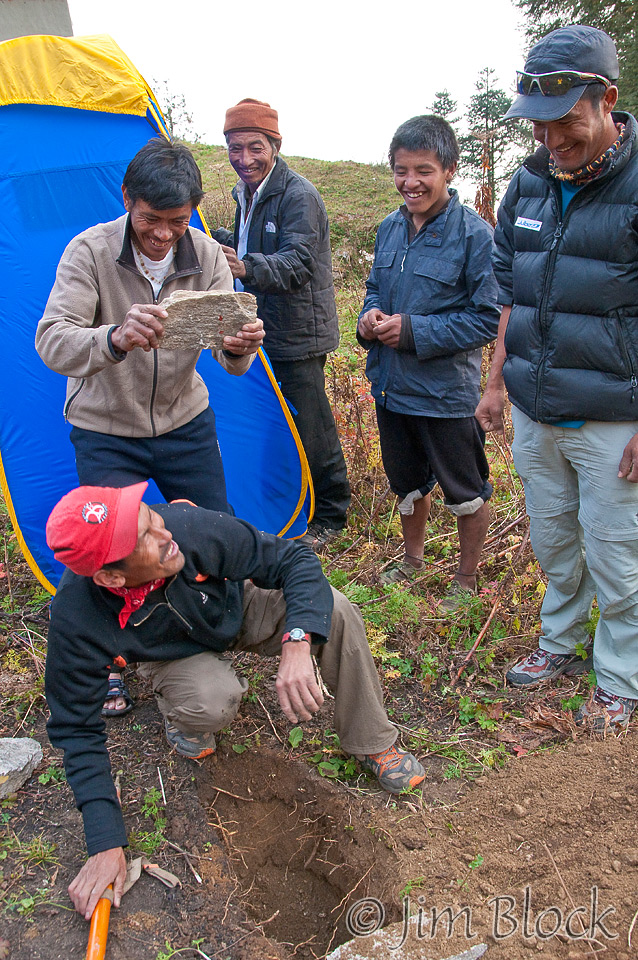
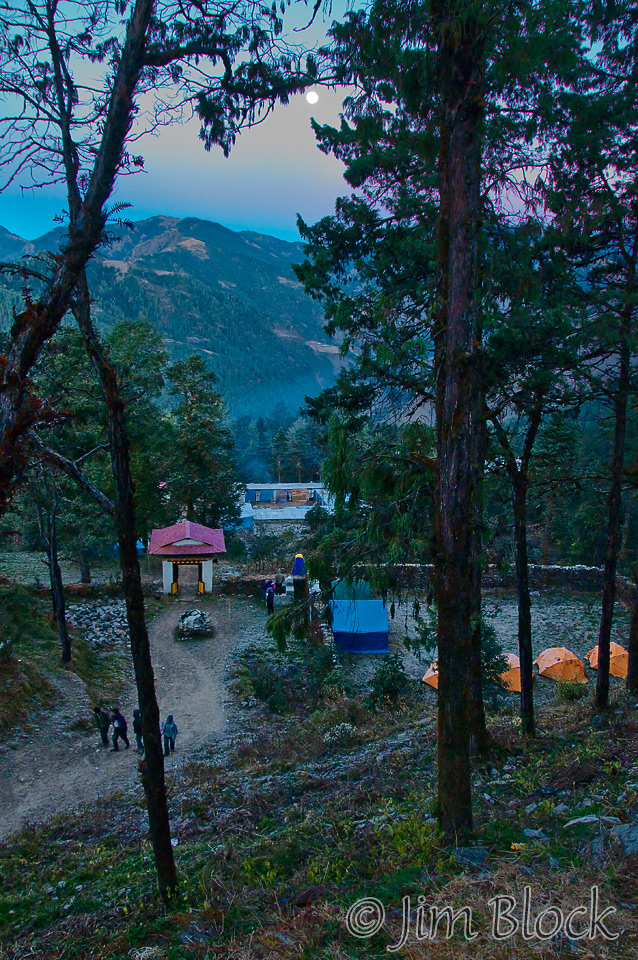
As usual, I was up very early the first morning and started walking up toward the monastery. Gelu Sherpa saw me and accompanied me to protect me from whatever. I believe one of the jobs Chhongba assigns to the sherpas is to keep an eye on us day and night to keep us out of trouble.
On the way up the monastery I turned to look back at our site and took this photo, another one of my favorites from the trip. You can see our orange tents and the blue eating tent. Chhongba sure got us a fantastic camp site just below the monastery and well uphill from the masses.
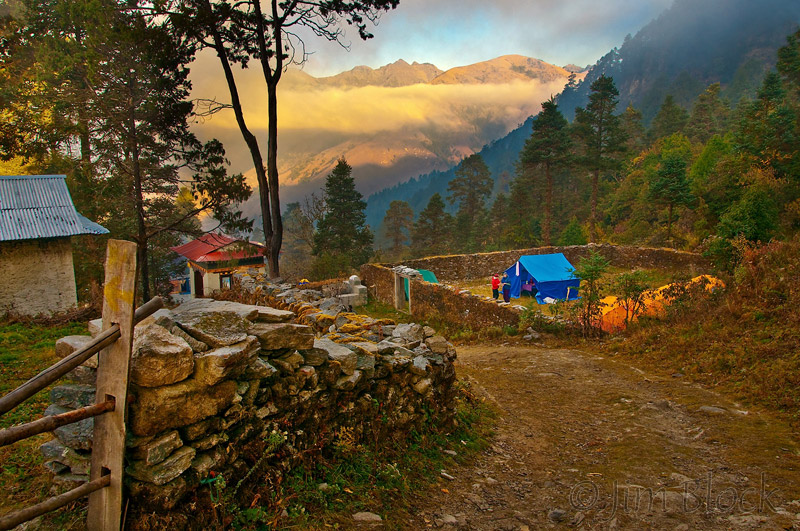
At the monastery we removed our shoes.
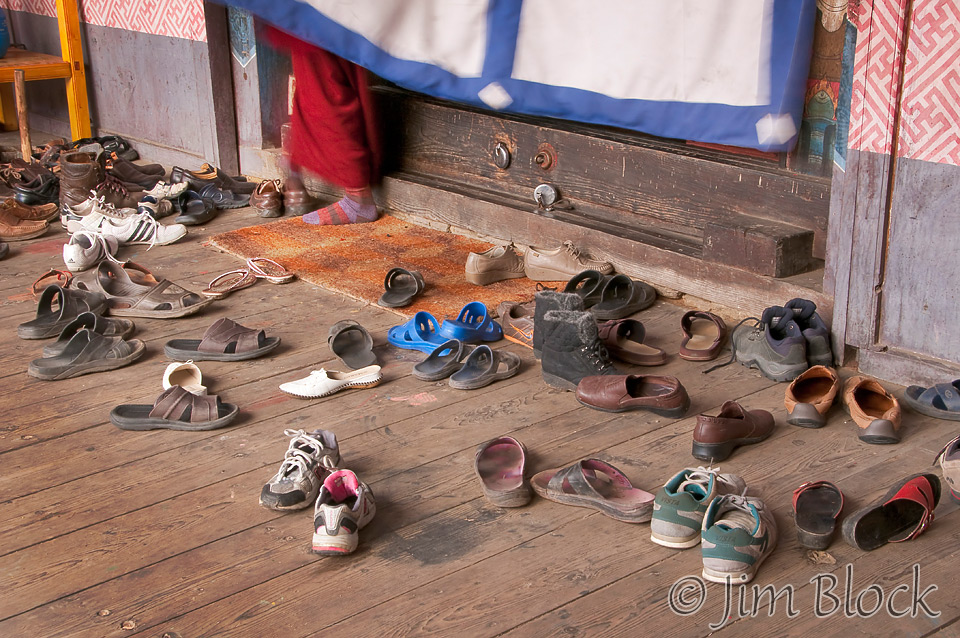
At Gelu’s suggestion, I entered to find perhaps 50 monks. Chang Chang Tuku Lama was upfront. I was reluctant to enter, but some of the monks waved me in and urged me to sit along the edge. I did and enjoyed the ceremony immensely. It happened this one time during Mani Rimdu, so I was very lucky to experience it. No one else in our group witnessed it. I believe Gelu stayed outside.
Later that morning we had a semi-private meeting with Chang Chang Tuku Lama. The Lama blessed us and gave us a red cord for our wrists. It is said that these red cords bring luck and offer protection. I wore mine for many months after returning to NH.
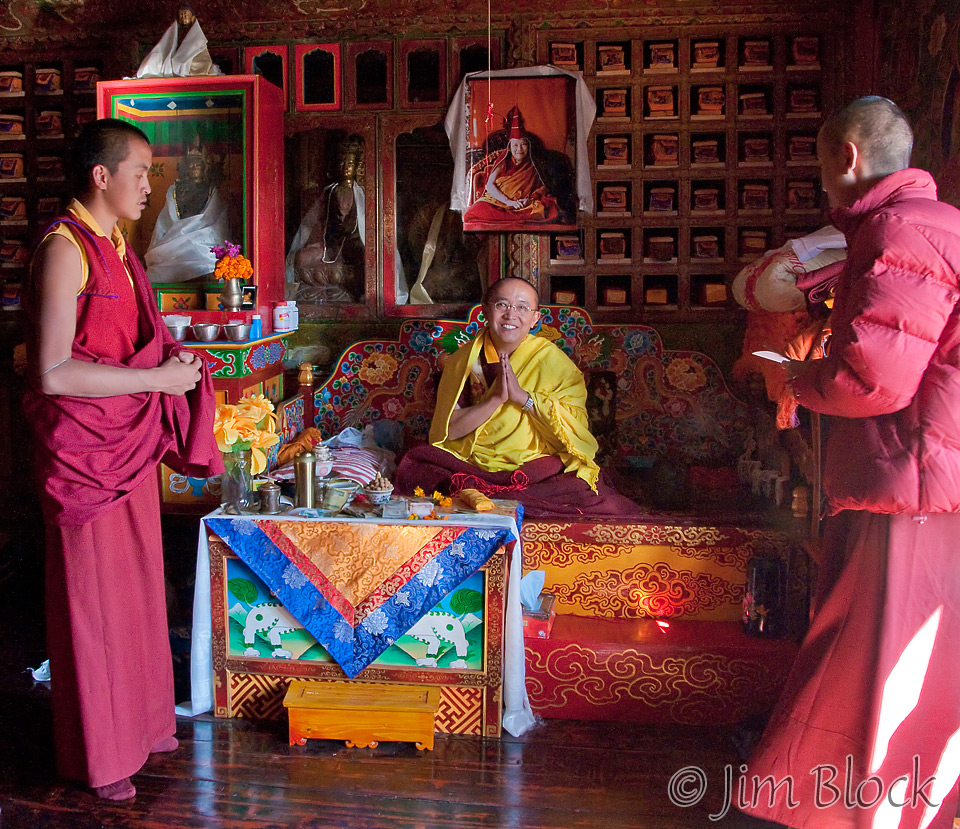
This was the first day of the three-day Mani Rimdu celebration at Chiwang Gompa seen below.
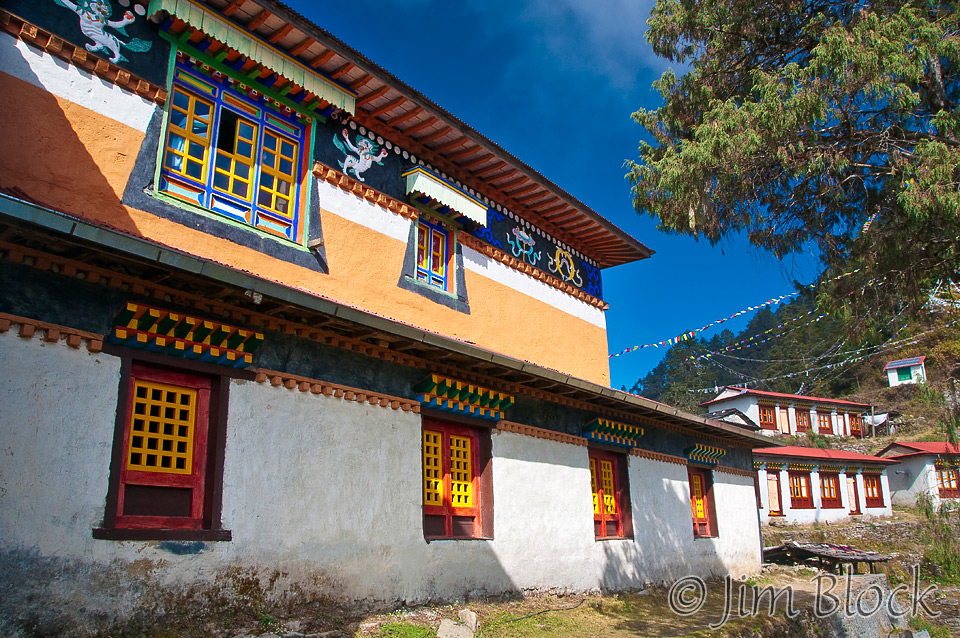
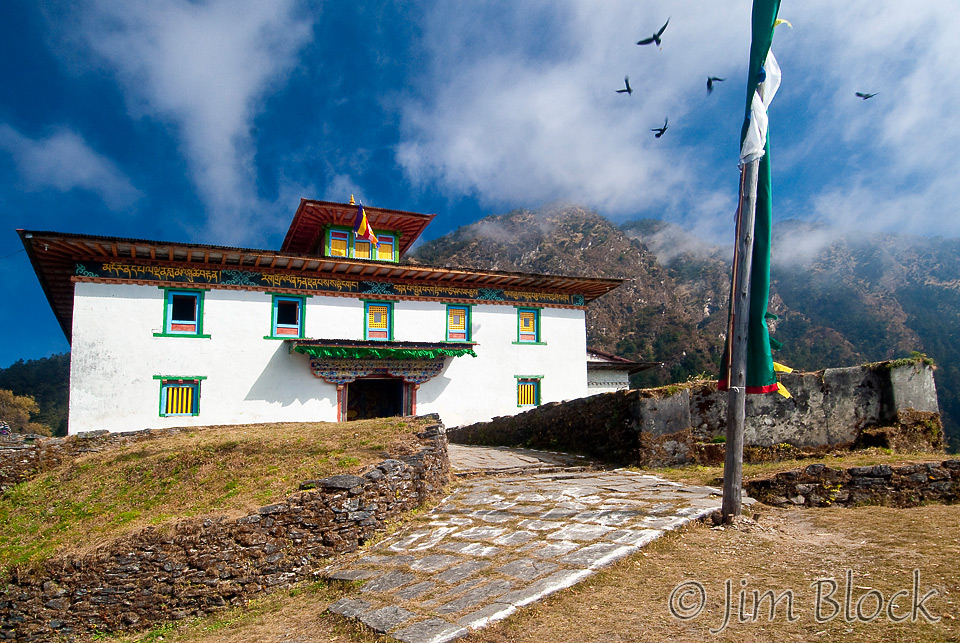
Mani Rimdu is the most important festival of the Sherpa people. It is held during the tenth lunar month of the Tibetan calendar, corresponding to October–November of the Gregorian calendar.
The celebration of Mani Rimdu begins with the blowing of horns, after which the abbot of the monastery chants prayers accompanied by other monks. The congregation is blessed and given holy water and pellets for good luck and longevity. An orchestra of cymbals, horns, flutes, and conch shells announces the start of the second day’s celebrations. Monks in colorful robes and huge glowering masks perform dances symbolizing the destruction of evil. On the last day, torma, figures made mostly of flour and butter used in rituals or as offerings in Tibetan Buddhism, are consigned to a sacred fire. This implies the end of negative forces and the advent of a blessed new year.
We departed Chiwang Gompa the third morning, so we missed the fire. But we did have our own private one our second night there.
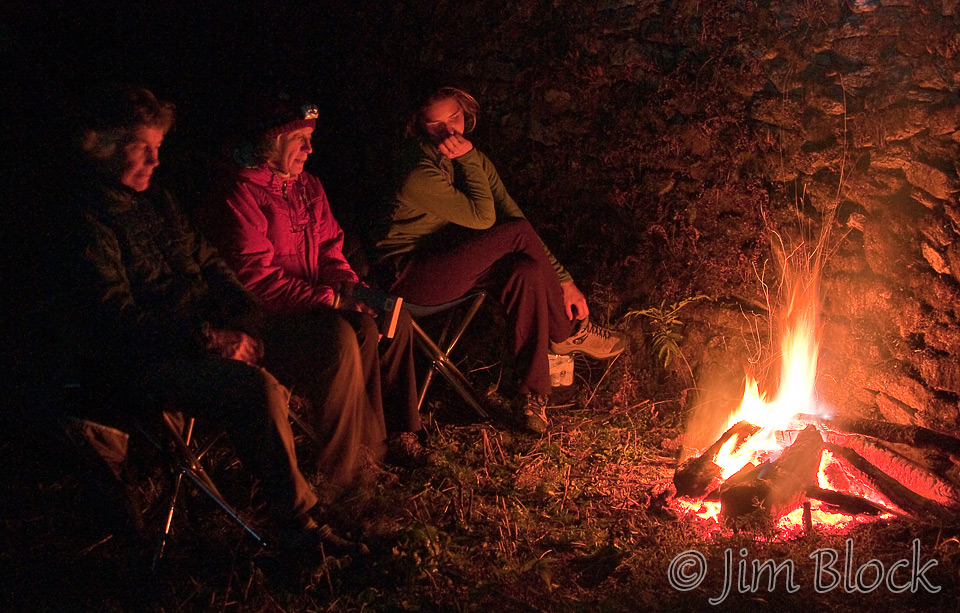
Here are photos from the first day of Mani Rimdu.
Still inside the monastery, I took two photos of part our group. The first photo has L-R Sarah, Denise, and Leeli. Note the red blessing on their foreheads.
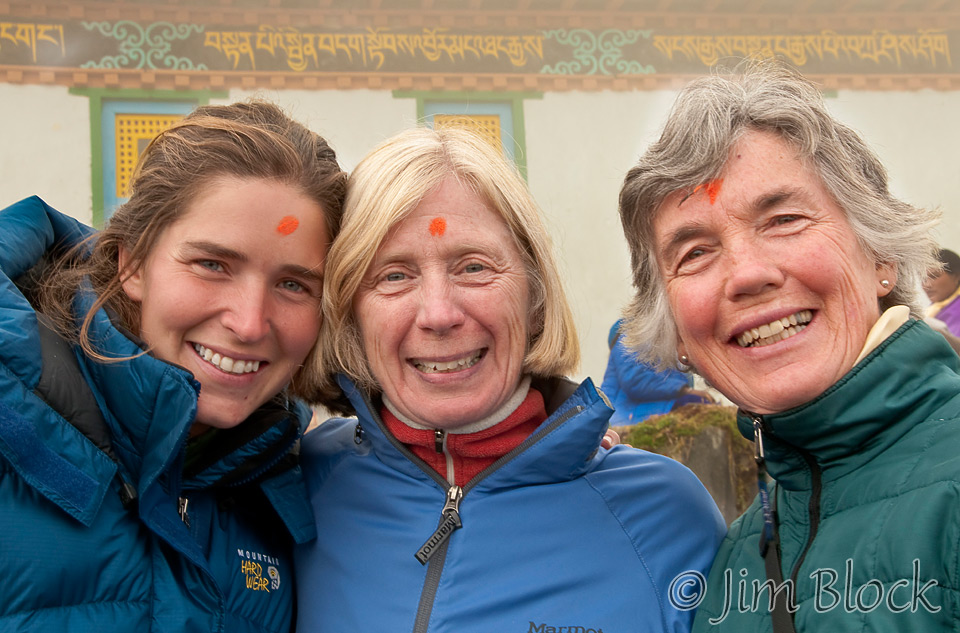
The second photo has Sarah sandwich between Alawa Sherpa and Runner Pasang, Chhongba’s son-in-law. He stayed with us in Etna for a week after the trip. He tried to learn xc-skiing that his bother in Switzerland excelled at. He should have stuck to very long distance races at very high elevations through the Himalayans where he excelled.
Pasang Sherpa was dubbed Runner Pasang to distinguish him from Chhongba’s son Pasang Sherpa. The Buddhists in Nepal tend to name their children after the days of the week they were born. Pasang is Friday. They all have the same last name, Sherpa. So telephone books in Nepal are a real problem.
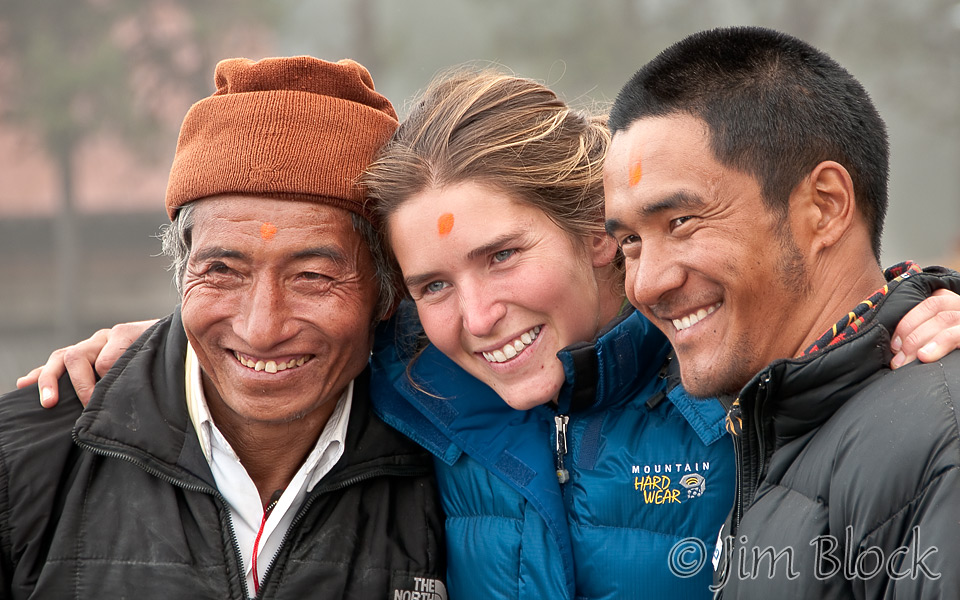
Early that morning on the second day of Mani Rimdu, I was again up before the group. The early light was fantastic. The next two photos were taken just after 6 AM. In the first one you can see the airport at Phaplu where we flew out two days later.
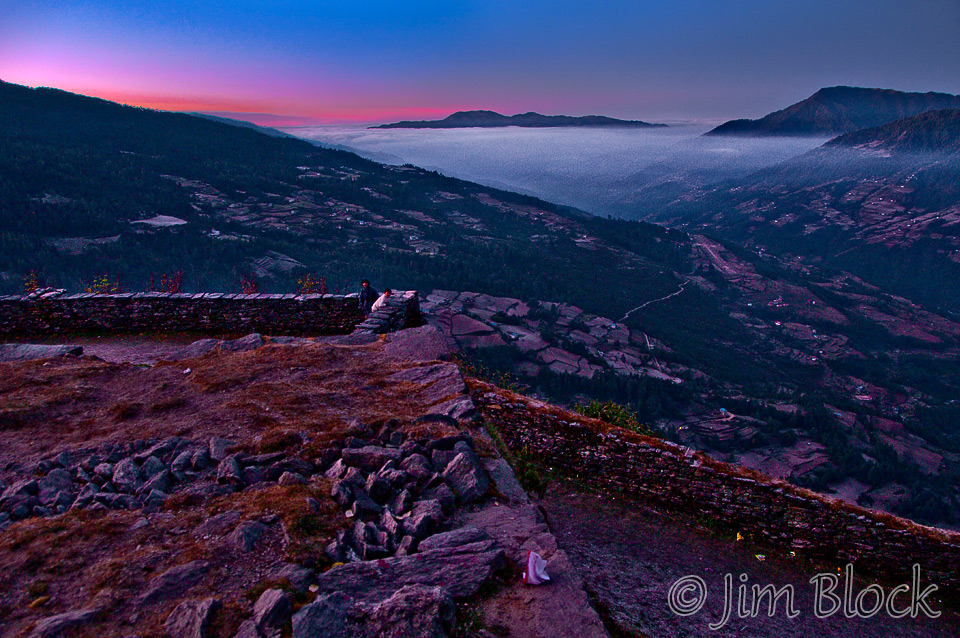
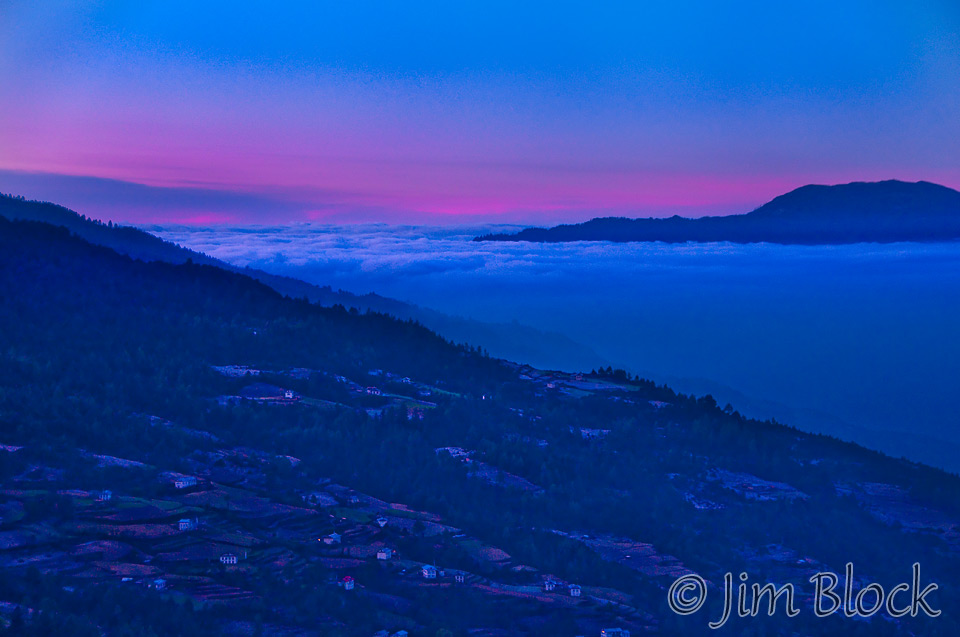
Thirty minutes later I took this photo of a monk standing on a stone wall contemplating the vastness behind him.
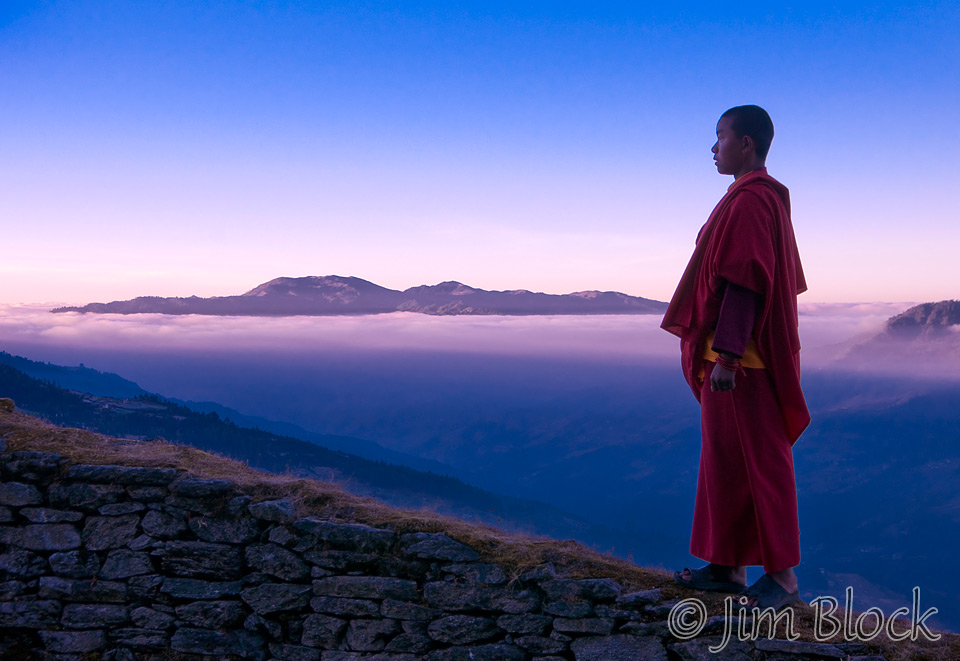
After the sun came up the light quite different. Sarah had arrived and sat on a wall below me contemplating the valley.
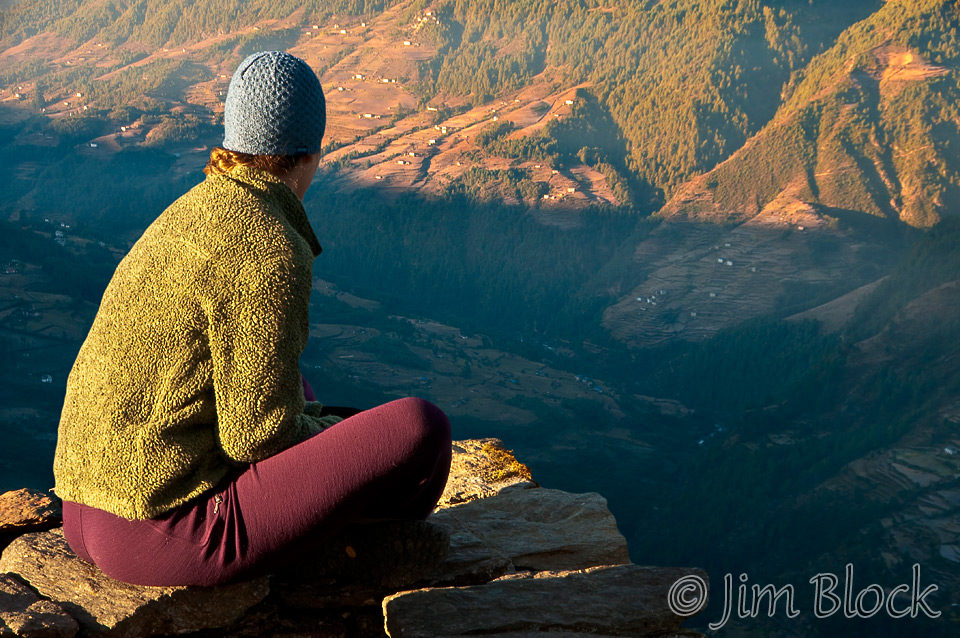
After breakfast we posed with Dendi Sherpa, our cook.
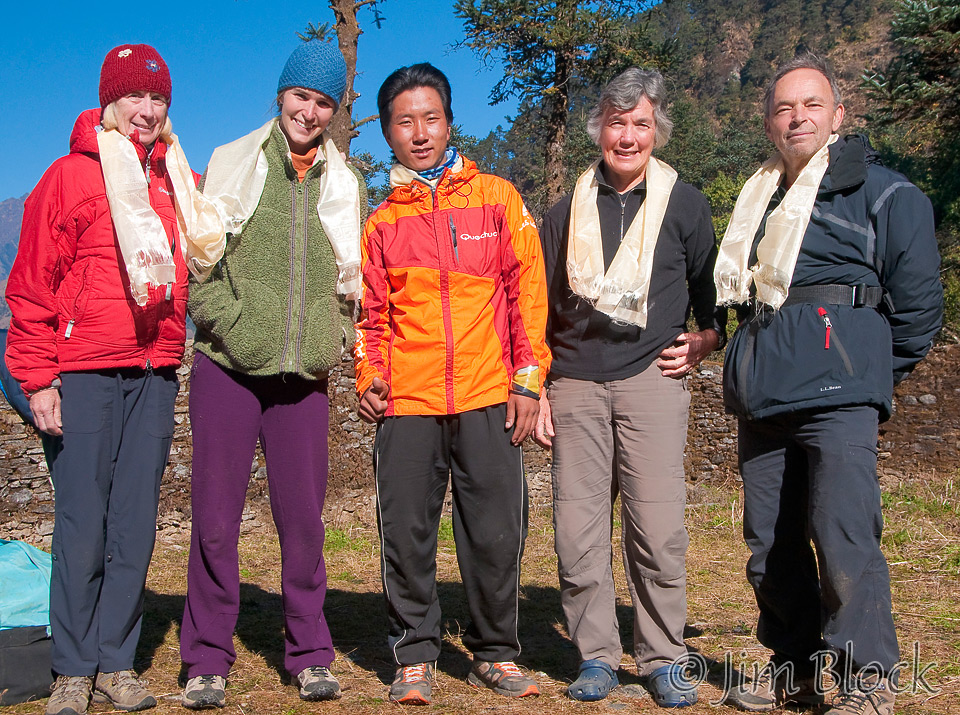
During my second trip to Nepal we spent the first night after our flight to Lukla in Phadking in the highest lodge in the photo below. I was up early and walked across the bridge seen at the right of the photo to watch some high elevation, long distance runners race through town.
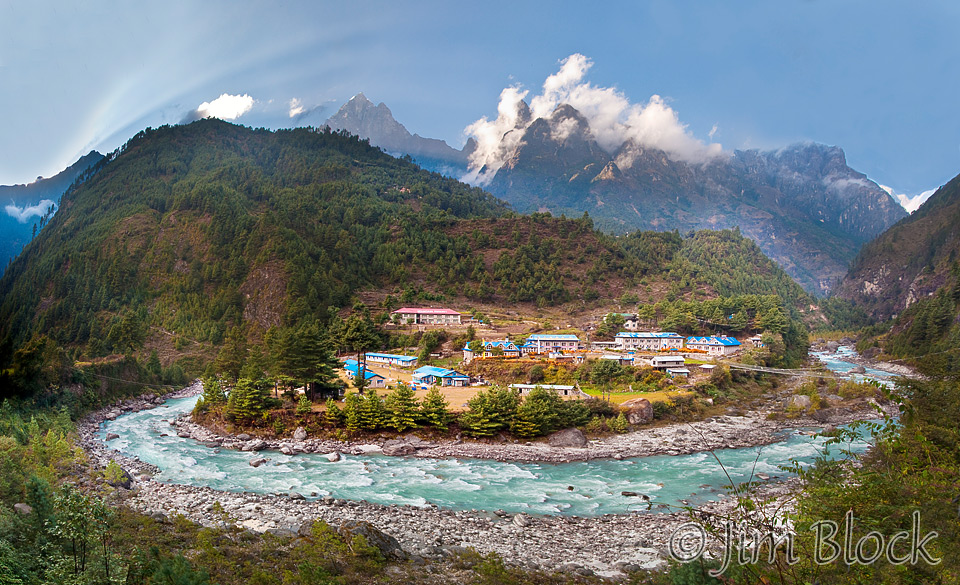
One of the race monitors looked familiar. I yelled “Dendi” and he called back “Jim”. What are the odds? Here is Dendi from each trip.
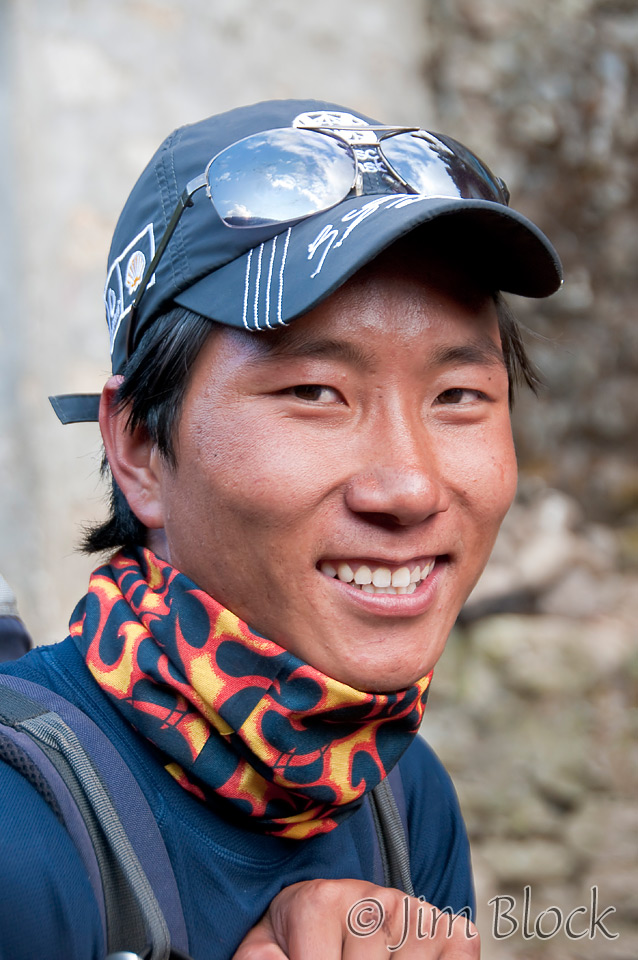
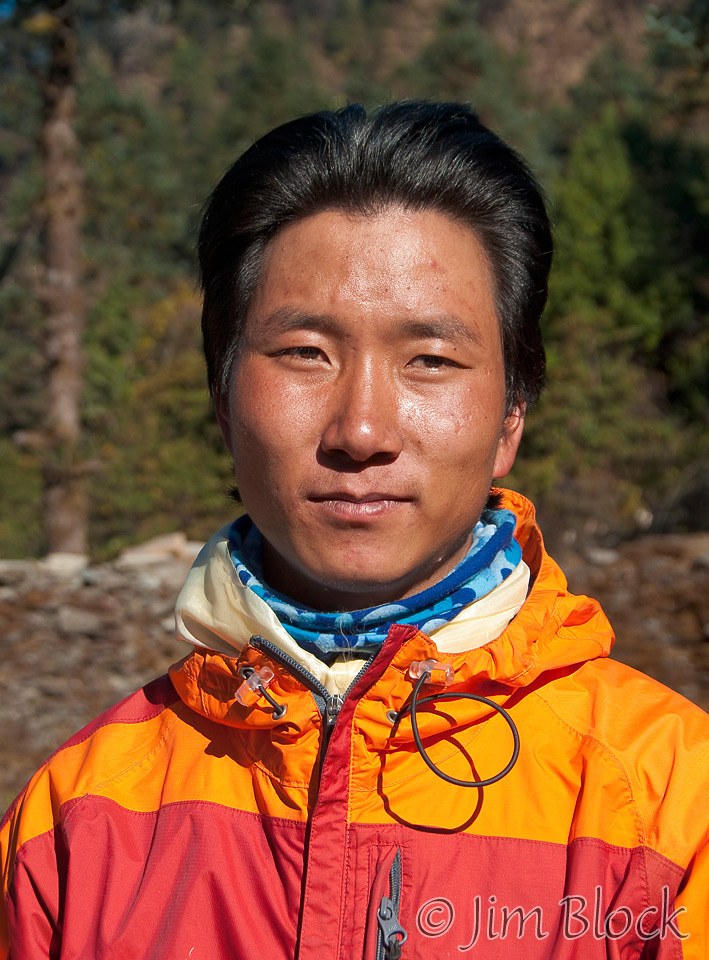
Chiwang Gompa monastery was again cold inside for the second day with masks and dances. It was a magical event. Here are some photos from the celebration.
Below are my two favorite photos from the Mani Rimdu celebration.
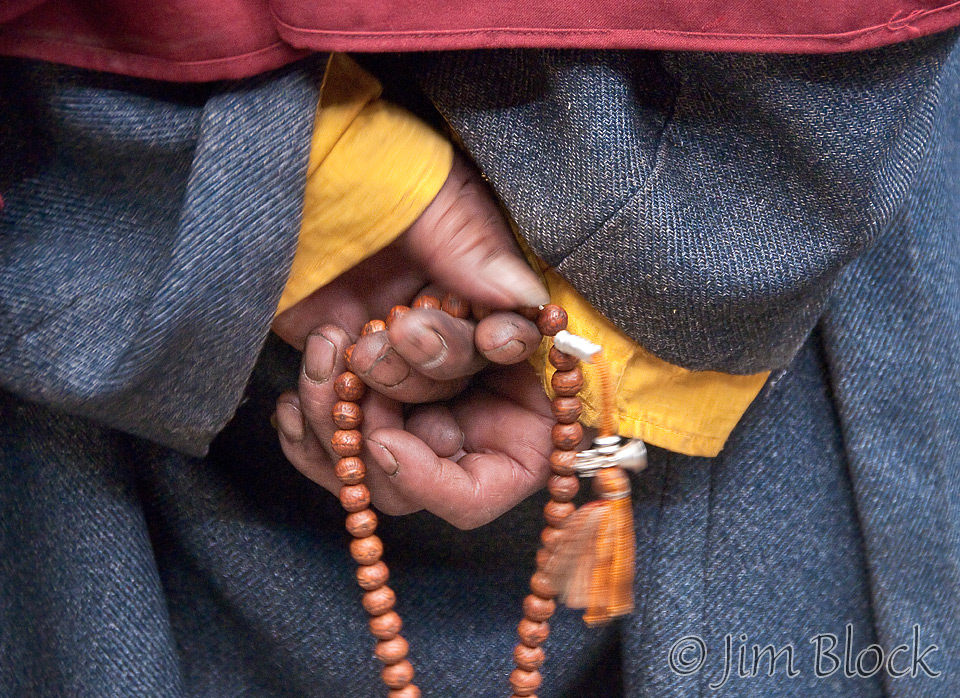
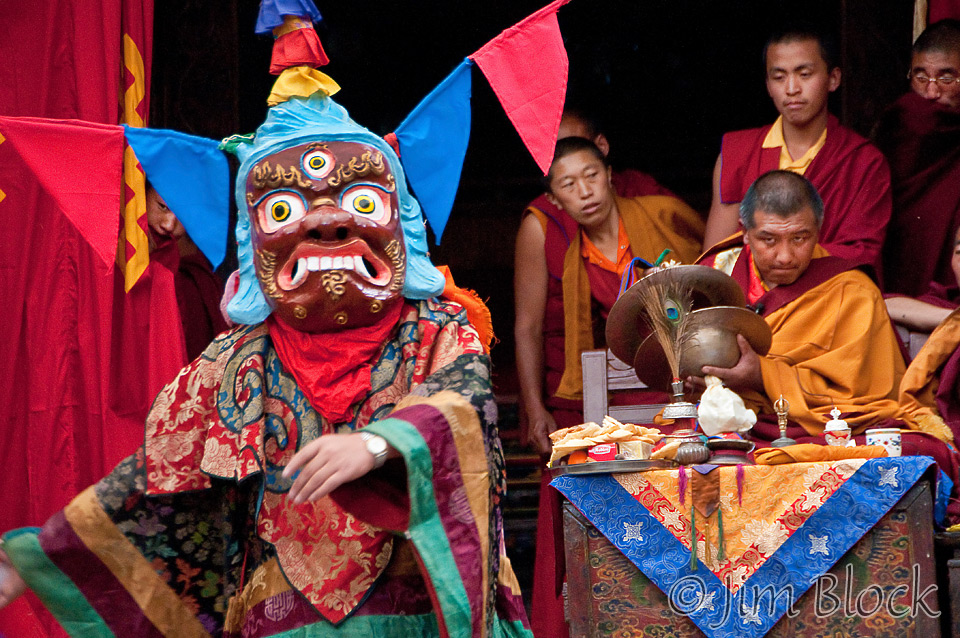
The last morning at Chiwang Gompa, I hiked back up to the monastery to get some scenic photos. This photo was taken at 6:15 AM. You can see our campsite along the right edge of the photo. We each had an orange tent and the blue tent was our dining room. The toilet was in a tent outside the walls over a dug hole.
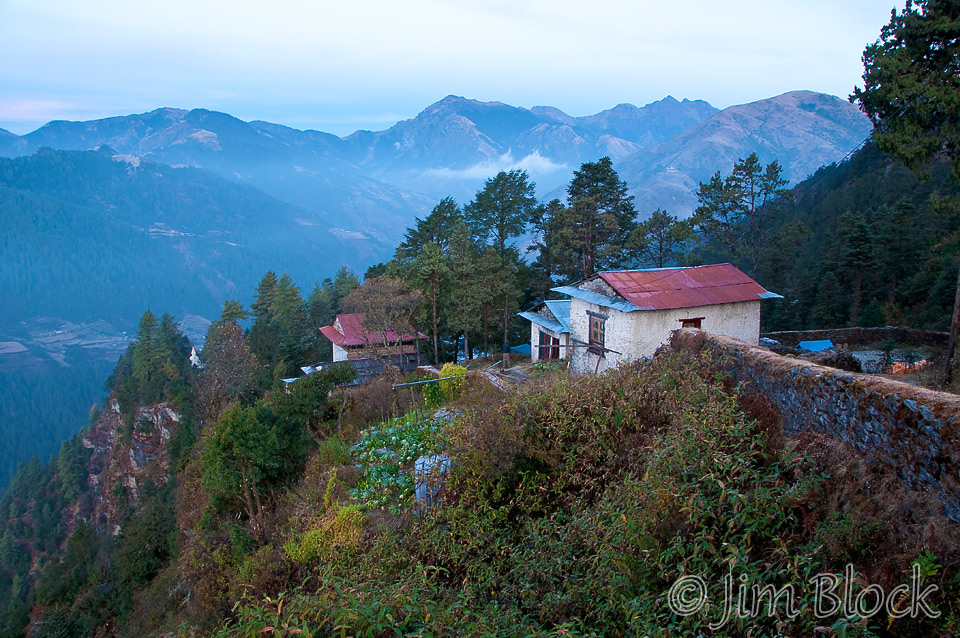
“Bed Tea” was at 6:30 AM. Here is Sarah getting her tea. In the aluminum pot to the right are hot wash cloths for face and hands. Morning ritual, every morning.
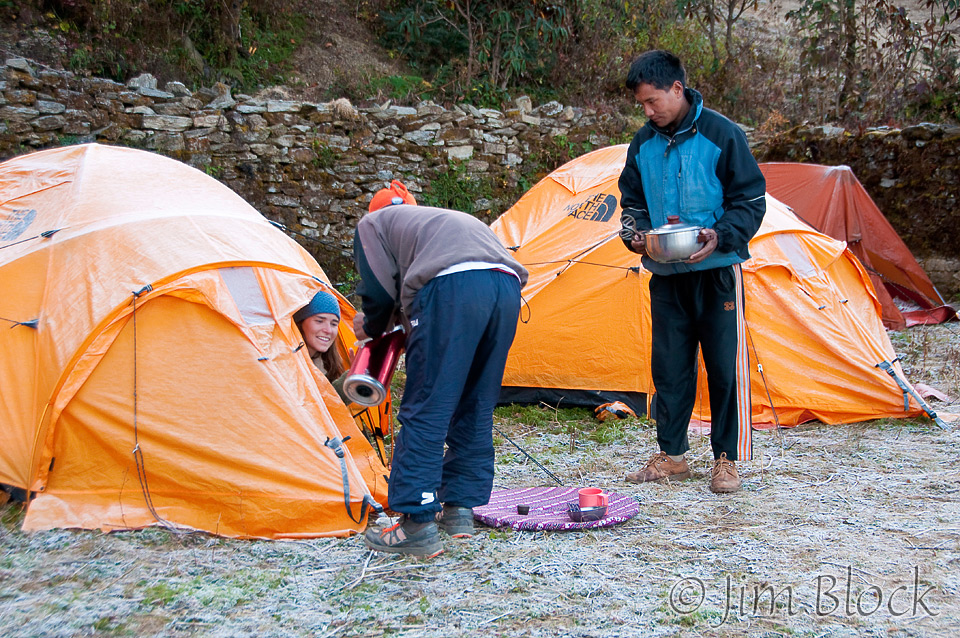
After breakfast we bid farewell to our cook and several porters. They would take the tents and other gear back to Nunthala. We would hike down to Phaplu for the night and then fly from there back to Kathmandu.
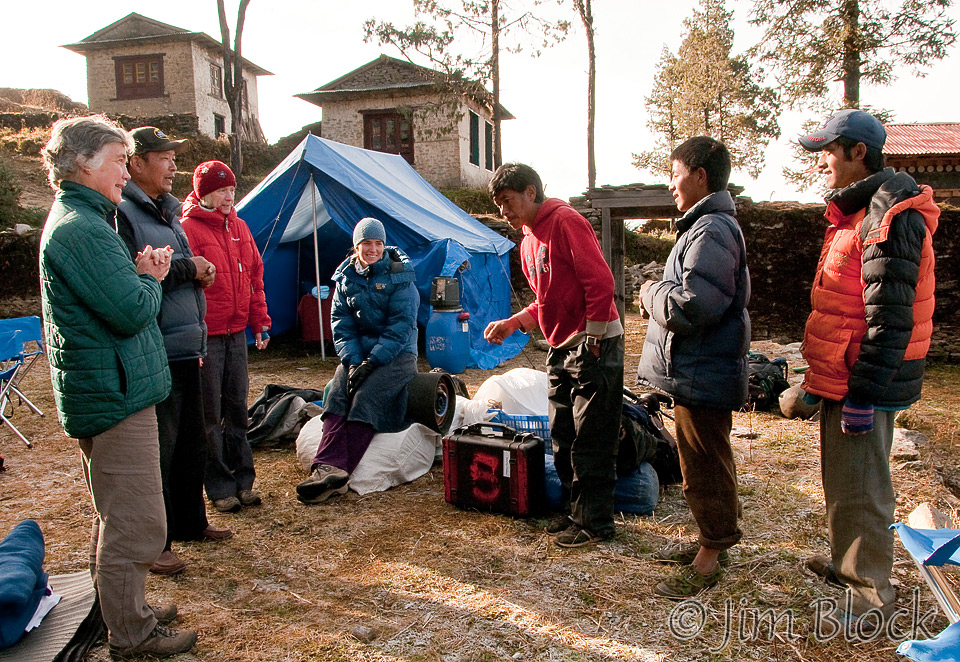
We had lunch at our hotel in Phaplu. I wanted to hurry down to the Saturday market Chhongba told us about in the neighboring village of Salerie. However, since this was the first chance in over a week for a “hot” shower, some of us needed to wash their hair first. Eventually we hustled down to the market.
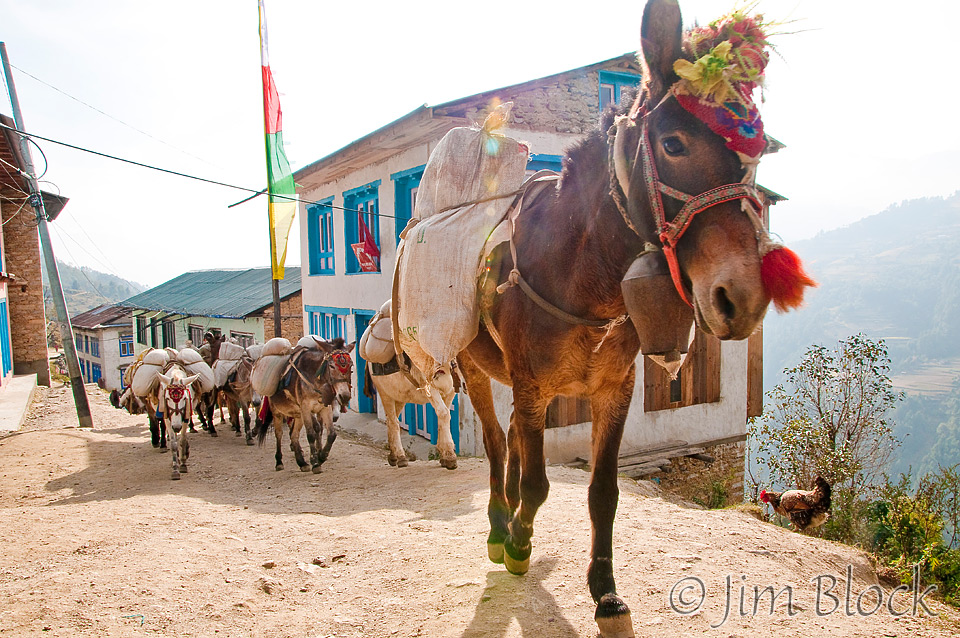
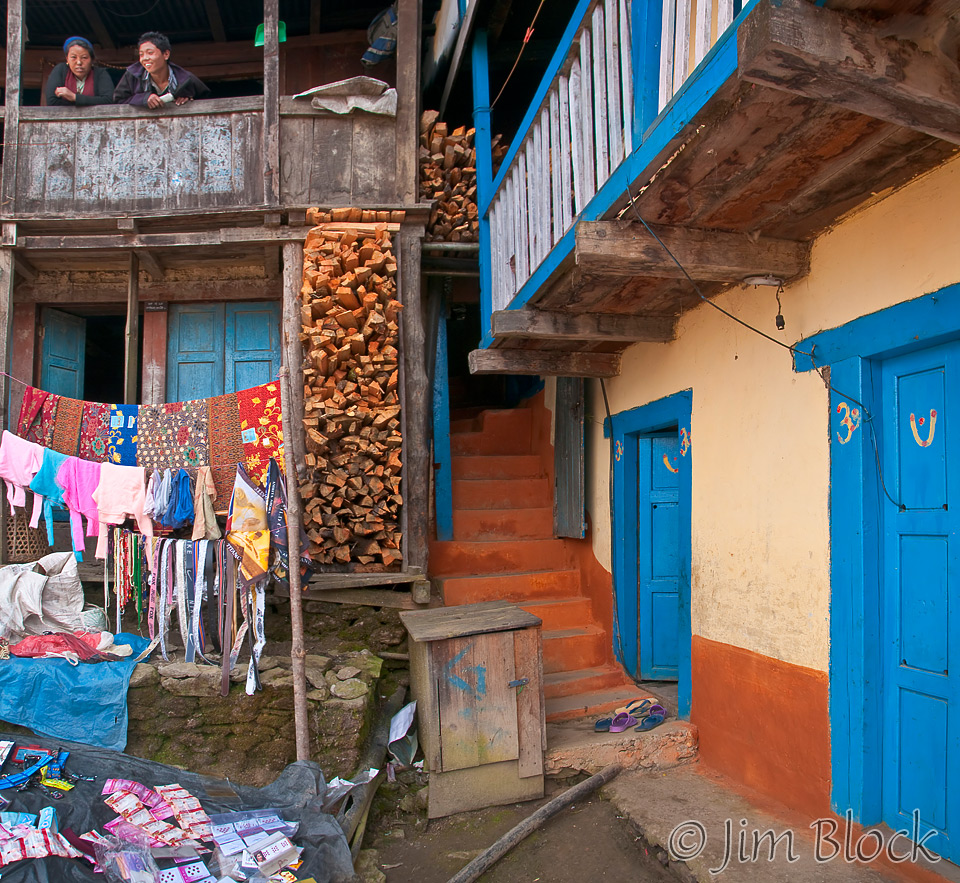
At the Salarie market I took another very favorite photo from my first trip to Nepal. I have printed six of the photos from this page large.
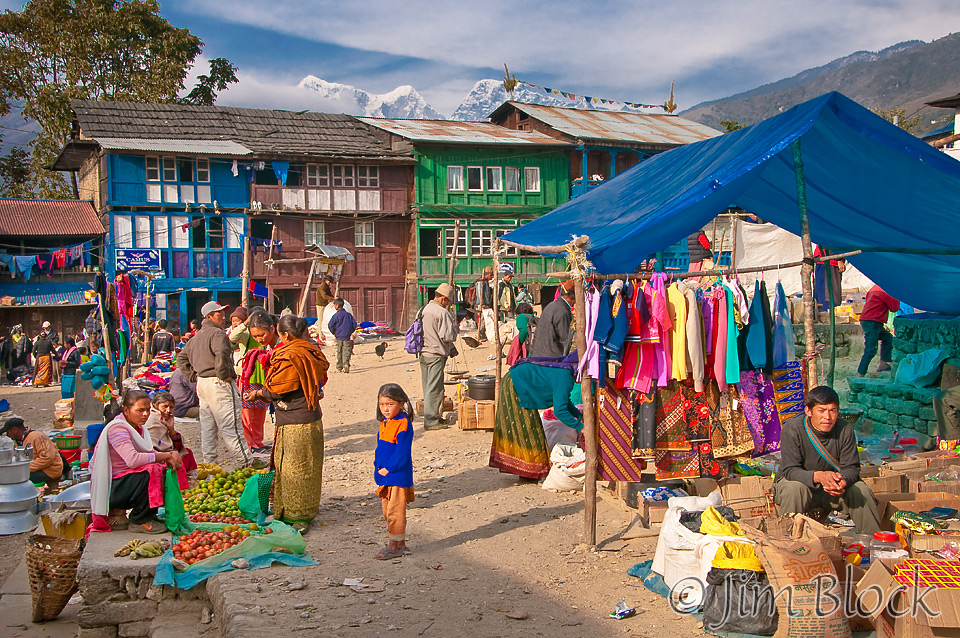
Walking back from the market I took some photos of the people and buildings along the way.
The next morning in Phaplu I took a photo of a woman sweeping the dirt in front of her home. If I recall correctly, Sarah bought back one of these brooms from Nepal.
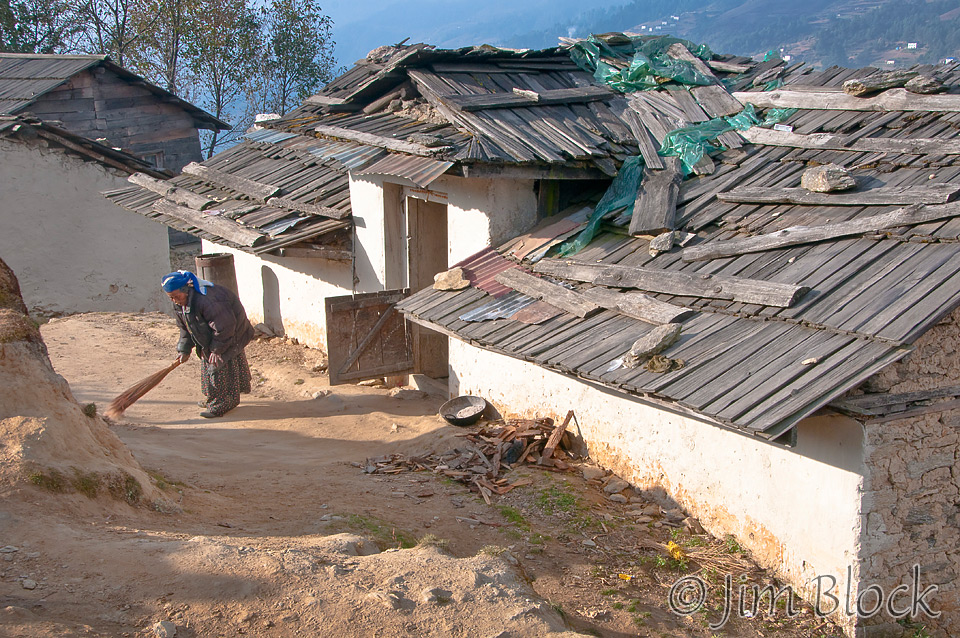
We walked to the airport and did a group photo. That is Alawa next to Leeli and Gelu next to Sarah. On my fourth trip to Nepal we again visited Ringmu, Gelu’s village. We met his young son again but were very sad to learn that Gelu had passed away. Sometimes life in Nepal is short from lack of medical care.
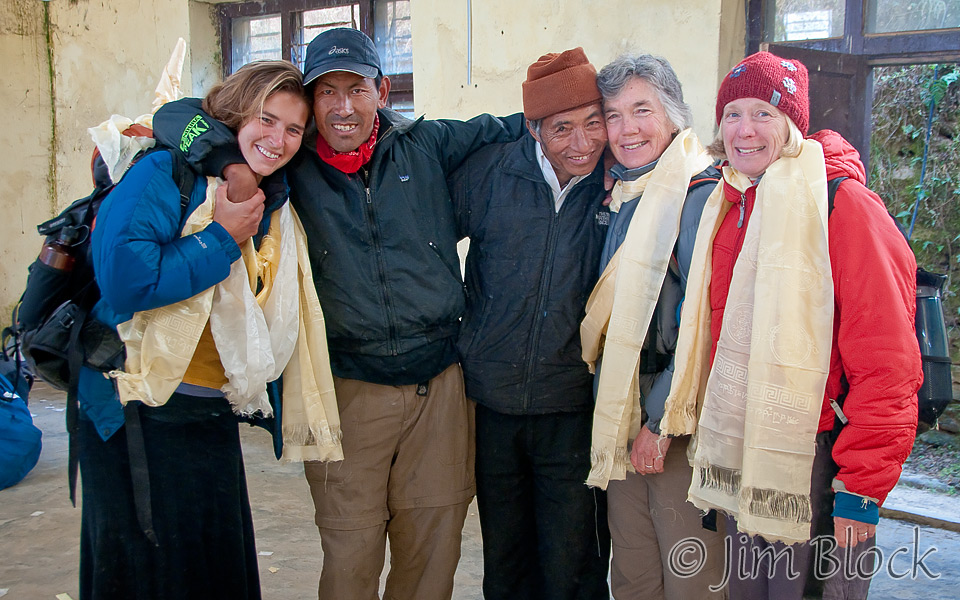
Our plane to Kathmandu arrived and passengers departed. Again, like for our plane to Lukla at the start of the trek, Chhongba had to catch the next flight back.
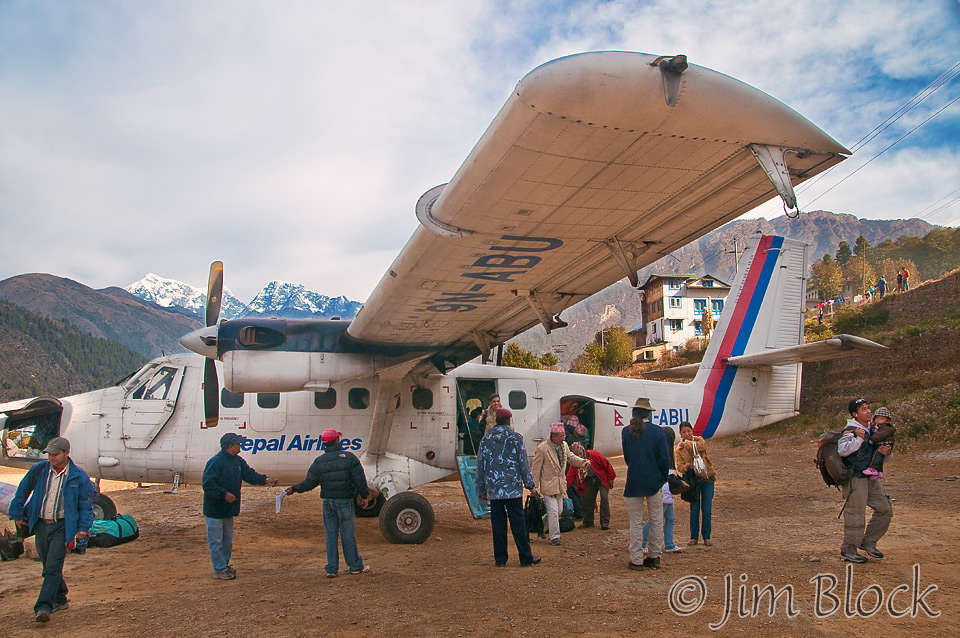
The views of the Himalayans were great on the return flight to Kathmandu.
